
Master 3D modeling for film and video games in under 2 years with CG Spectrum. Get personalized career training online from leading 3D artists from major studios, plus career support and access to a vibrant community. Learn more.
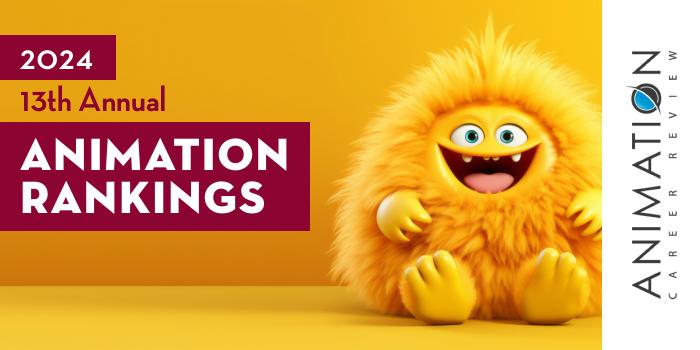
| Ranking | School | Country |
|---|---|---|
| 1 | Gobelins Paris | France |
| 2 | Sheridan College | Canada |
| 3 | The Animation Workshop/VIA University College | Denmark |
| 4 | Bournemouth University | United Kingdom |
| 5 | RMIT University | Australia |
| 6 | Emily Carr University of Art + Design | Canada |
| 7 | Supinfocom Rubika | France |
| 8 | Royal College of Art | United Kingdom |
| 9 | Griffith University | Australia |
| 10 | Ontario College of Art and Design | Canada |
| 11 | Nanyang Technological University | Singapore |
| 12 | ARTFX | France |
| 13 | École Supérieure des Métiers Artistiques (ESMA) | France |
| 14 | Beijing Film Academy | China |
| 15 | Université Laval | Canada |
| 16 | University of Technology Sydney | Australia |
| 17 | Escape Studios | United Kingdom |
| 18 | Media Design School | New Zealand |
| 19 | Teesside University | United Kingdom |
| 20 | MoPA | France |
| 21 | University of Melbourne | Australia |
| 22 | Tokyo Animation College | Japan |
| 23 | Image Campus | Argentina |
| 24 | University of Hertfordshire | United Kingdom |
| 25 | Lucerne School of Design | Switzerland |
| 26 | York University | Canada |
| 27 | National Institute of Design | India |
| 28 | Bezalel Academy of Arts and Design | Israel |
| 29 | Queensland University of Technology | Australia |
| 30 | ChungKang College of Cultural Industries | South Korea |
| 31 | Institute of Art, Design + Technology | Ireland |
| 32 | City University of Hong Kong | Hong Kong |
| 33 | Istituto Europeo di Design | Italy |
| 34 | Swinburne University of Technology | Australia |
| 35 | University of Quebec at Chicoutimi | Canada |
| 36 | Ecole Emile Cohl | France |
| 37 | University of Technology, Arts and Design | Spain |
| 38 | The Glasgow School of Art | United Kingdom |
| 39 | ISART Digital | France |
| 40 | Staffordshire University | United Kingdom |
| 41 | Haute Ecole Albert Jacques | Belgium |
| 42 | Edinburgh College of Art | United Kingdom |
| 43 | Limkokwing University of Creative Technology | Malaysia |
| 44 | Jilin Animation Institute | China |
| 45 | Deakin University | Australia |
| 46 | University of Portsmouth | United Kingdom |
| 47 | Ecole Des Nouvelles Images | France |
| 48 | Academy of Media Arts Cologne | Germany |
| 49 | L'Institut Supérieur des Arts Appliqués | France |
| 50 | University of South Wales | United Kingdom |
For this ranking we only consider formal degree programs (bachelor's degree or equivalent). For an explanation of our ranking criteria, click here.

Animation at Gobelins Paris (Gobelins) consists of a 3D Character Animator certificate, a preparatory program, and degree options at all levels. The certificate program emphasizes learning by doing through simulation exercises and experiential learning opportunities. Coursework covers 3D animation, acting, animation styles from cartoon to realism, character animation, body mechanics, and 3D layout. Other program benefits include trips to animation conferences; a two-month internship; and the production of a final individual demo reel.
The Gobelins 3D Character Animator certificate takes just one year to complete, full-time. Graduates have a 100% employment rate within six months of completing the program. Examples of career opportunities include 3D Animation Supervisor, 3D Character Animation, and Director of 3D Animation.
Designed for students with a high school diploma, Gobelins’ preparatory program provides the opportunity for students to develop basic creative and technical skills through courses and topics such as Observation Drawing; Animation Techniques; History of Arts and Animation Cinema; Stop Motion; and Character Design.
Animation Preparatory students also benefit from hands-on learning; workshops; mentorship; and optional internships during school holidays. This full-time program has both online and on-campus options that can be completed in just one year.
The Animation Preparatory program culminates with a final project or portfolio of the students best work. Upon completion of the program, graduates are prepared to pursue an entre-level position or apply to one of Gobelins Animation degree programs. These include a BA in Character Animation and Animated Filmmaking; a Bachelor in 3D Animation; an MA in Character Animation and Animated Filmmaking; and a Visual Storytelling MA. Programs are provided in partnership with CITIA (la Cité de l’Image en mouvement d’Annecy).
The Character Animation and Animated Filmmaking BA, and the 3D Character Animation program explore areas such as anatomy, special effects (SFX), 2D/3D animation, motion capture, acting, scriptwriting, character and background design, 3D layout, storyboarding, film analysis, direction, history of art, and editing. Students will also master digital tools specific to Animation such as Maya, Première, Photoshop, TV Paint, Animate, After Effects, and Storyboarder.
For both programs, students will work their way through the entire Animation production pipeline. Both programs take three years to complete, full-time. All graduates enjoy a near 90% employment rate within six months after graduating.
The Character Animation and Animated Filmmaking MA at Gobelins Paris is a two-year program that explores filmmaking, scriptwriting, 2D and 3D character animation, directing, graphic design, storyboarding, sound design, 2D and 3D layout, rigging, acting, special effects animation, rendering, and compositing. Students in this professional program will work in teams on projects and animated productions; complete an internship; and produce a demo reel and portfolio.
Other program features include courses taught by professionals from major studios; participation in workshops and projects sponsored by partner companies and public institutions such as Netflix, the French Ministry of Justice, Dell, Universal Music, BMW, Olympus, and Musée Picasso; access to state-of-the-art equipment, studios, and dedicated workstations; and participation in a speed-recruiting event organized during the Annecy festival with more than 50 companies in attendance.
Graduates of the Animation degree programs at Gobelins Paris are prepared to pursue titles such as 2D Animator, 3D Animator, Crowd and Series Animator, 2D Animation Director, Previz Artist, Film Director, Character Designer, Storyboard Artist, 3D Animation Supervisor, and Video Game Animator.
The Visual Storytelling MA at Gobelins Paris is a two-year program that prepares students for careers in areas such as animation, video game design, illustration, comic book publishing, and motion design. The program explores character development, universe design, production pipelines, new and emerging technologies, audiovisual creation, adaptations, narrative forms, and group studies.
This project-based program provides the opportunity for students to intern with a French or international company; complete a study trip and research paper on narrative techniques; or participate in an academic mobility at a partner school. Students will also learn how to pitch in teams or individually, and develop a project in animation, gaming, motion design, serious gaming, comics, or other related area. Each student's final pitch will be evaluated by a professional jury.
Founded in 1964 by the Chamber of Commerce and Industry (CCIP) of the Paris Ile-de-France region, Gobelins Paris is one of the oldest Animation schools in the world. Serving approximately 1,105 students today across two campuses in Paris and one in the French Alps, Gobelins provides a variety of programs leading to a BA, MA, or Professional Certificate. Single courses such as 2D Animation, From Storyboard to Animatic, and Drawing for Movement are available online. Gobelins Paris is a member of the French Animation School Network known as RECA, and IPAX—the U.S. network of schools recognized by Sony Pictures.

Sheridan College (Sheridan) houses the Faculty of Animation, Arts & Design (FAAD). The largest art school and Canada and known as the “Harvard of Animation,” FAAD serves approximately 4,925 full-time students across 32 programs in Animation and Game Design; Film, TV, and Journalism; Visual and Performing Arts; Design, Illustration, and Photography; and Material Art and Design.
Animation options include a Bachelor of Animation and graduate certificates in Computer Animation or Digital Creature Animation-Technical Direction. The bachelor’s program takes four years to complete and graduate certificates take one year to complete. Course examples for the Computer Animation program include Animation Design; Technical Direction; Lighting and Look Development; Animation Methodology; and Directed Projects.
Students in the Digital Creature Animation-Technical Direction will take courses such as Digital Sculpting; Anatomy and Life Drawing; Digital Creature Systems; and Digital Creature Methodology. Bachelor of animation students will take courses such as Introduction to Digital Tools; Character Design; Composition and Rhetoric; Introduction to Life Drawing; Animation Principles; and Story Development.
A major component of the Bachelor of Animation is the mandatory three-month work placement, which allows students to gain professional work experience in the field prior to graduation. Students will also participate in Sheridan’s Annual Industry Day, where they will meet with employers from across North America. Examples include DreamWorks, HP, Illumination, NVIDIA, Brown Bag Films, Big Jump, Atomic Cartoons, Toronto Animation Arts Festival International (TAAFI), House of Cool, Switch FX, Wacom, Jam Filled, Wild Brain Studios, and Mercury Filmworks.
Students in all FAAD animation programs also benefit from study abroad opportunities at Dun Laoghaire Institute of Art and Design (IADT) in Ireland; access to state-of-the-art facilities at the Sheridan Centre for Animation and Emerging Technologies (SCAET); and collaborative projects that take place in an immersive, hands-on, studio environment.
The Computer Animation certificate program at Sheridan College culminates with a Capstone, while the Digital Creature Animation-Technical Direction program culminates with a directed project completed across two courses. Students in the Bachelor of Animation program will graduate with a professional demo reel of their best work.
Graduates are prepared for careers across the feature film, animation, television, gaming, and advertising industries. To date, more than 80 FAAD program alumni have been nominated for Emmys, and nearly 20 have been nominated for Oscars. FAAD graduates can also be found at major studios across North America and around the world. They work in roles such as Animator, Layout Artist, Animation Director, Creature Animator, Rigger, TD Supervisor, Video Game Artist, Modeler, and Technical Director.
Sheridan College serves approximately 40,065 students making it one of Canada’s largest universities by enrollment. With 3,380 employees, Sheridan is also one of the top 10 largest employer’s in Oakville, Ontario. Established in 1967, Sheridan College provides more than 140 programs across five faculties and four campuses including Davis (Brampton, Ontario), Hazel McCallion (Mississauga, Ontario), Trafalgar Road (Oakville, Ontario), and the Virtual Campus. Of the school’s 140+ programs, more than 90 provide work-integrated learning (WIL) opportunities.
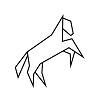
VIA University College (VIA) is home to the School of Business, Technology and Creative Industries, which houses The Animation Workshop (TAW). Launched in 1988 and housed in an old military complex, TAW is a community of more than 650 students, staff, and professionals dedicated to the advancement of Animation. The Workshop also hosts the biggest Animation festival in Denmark known as the Viborg Animation Festival (VAF).
TAW consists of seven departments including the Bachelor of Arts Department; Professional Training; Research and Development; the Animated Learning Lab; Business Development; the Open Workshop – Artist Residency; and the Visual Talent Center. TAW Research and Development is a Center for Animation, Visualization, and Digital Storytelling (CAV) that explores formal research areas such as Animated Learning; Aci-VI; Interactive Technologies and Games; Immersive Storytelling and Documentary; and ANIMOK.
Other TAW features include access to nearly 119,000 square feet of facilities and buildings; courses taught by instructors who are professionals in the industry; relationships more than 100 external professionals and established companies; and 30+ Animation, Games, and New Media start-ups. Consisting of more than 650 students, staff, and professionals, TAW also
The Animation Workshop has both formal degree programs and professional training (PT) options. Examples of PT programs include 3D Character Animation (14 weeks); ANIDOX:LAB (three modules over months); Animation Production Manager (one week); Unreal Engine Animation Training (one week); Creative Simulation Technologies (12 weeks); Animation (one week); and Summer School/Toon Boom Harmony 2D Animation (three weeks).
Formal degree programs for Animators include BA degrees in Character Animation; Computer Graphic Arts (CGA); and Graphic Storytelling. Curriculums include assignments, lectures, individual projects, and a group project. Electives for all options allow students to focus one or more areas of interest.
A major component of all Animation Workshop programs is the 10- to 14-week internship in the final semester. During this time, students will have the opportunity to gain valuable work experience with a production studio such as Aardman, Illumination, Cartoon Studio, Sun Creature, or Nørlum.
All TAW programs culminate with a final project that typically takes four to five weeks to complete. Students focusing in Animation will complete an animated short film. All students will graduate with a portfolio and showreel. Depending on the program, students will graduate in 3.5-four years if attending full-time.
Established in 2008, VIA University College is one of Denmark’s six university colleges. The school serves 19,000 full-time students enrolled in 42 degree programs across the Animation, Film, Technology, Design, Engineering, Business, Education, Health, and Social Studies disciplines. Programs at VIA University are taught in Danish and English. One of Denmark’s largest institutions of higher education, VIA has eight campuses and seven research centers in seven different cities across the Central Region of Jutland.
All programs at VIA University College are accredited by the Danish Accreditation Council. VIA is also a certified holder of an ERASMUS+ charter; the school is a member of the European Association for Quality Assurance in Higher Education (ENQA); and it holds a Qualification Certificate from the People's Republic of China.

Bournemouth University (BU) is home to the Faculty of Media & Communication, which houses the National Centre for Computer Animation (NCCA). Established in 1989, the NCCA is one of the few research-intensive Animation centers in the UK. In 2011, the NCCA was presented with the Queen’s Anniversary Award for world-class computer animation teaching with wide scientific creative applications. In addition, BU is one of a small number of institutions in the UK to achieve Houdini Certified School status by Side Effects Software.
The NCAA at BU has both undergraduate and graduate programs for students seeking a career in Animation. At the undergraduate level, students can earn a BA in Computer Animation and Visual Effects. Graduate students have three options including the 3D Computer Animation MA; the MSc in Computer Animation and Visual Effects; and the Digital Effects MA.
All options are ScreenSkills recognized and feature collaborative projects that simulate real world scenarios and challenges; lecture series; access to animation labs equipped with industry-standard software such as Houdini, Maya, Unreal Engine, Zbrush, Unity, and Nuke; access to green screen motion capture, and virtual production studios; and industry guest speakers.
Studios that have visited BU include Disney Animation Studios, Pixar, DreamWorks, Microsoft, DNEG, Epic Games, Industrial Light & Magic (ILM), Sony Interactive Entertainment Europe (SIEE), Framestore, Moving Picture Company (MPC), Animal Logic, Illumination, and Blue Zoo Animation.
A major component of the animation programs at Bournemouth University is participation in the Annual BFX Festival. With nearly 1,000 attendees and nearly 60 speakers, BFX is one of the largest Animation, Games, and Visual Effects festivals in the UK. This international event features networking opportunities with artists and speakers from all areas of entertainment; talks and panels; competitions; screenings; and nearly 20 masterclasses by experts in the industry.
The Computer Animation and Visual Effects BA at BU has three pathway options including Visual Effects; Art and Design; and Technical Arts. Course examples for the program include Modeling and Texturing; Principles of 3D Animation; Procedural Content Creation; Lighting and Look Development; Image Manipulation for Animation & Visual Effects; Concept and Story; and Professional Practice.
All BA students have the opportunity to complete an invaluable 30-week internship at a studio; work with supportive tutors who will review their work; and tailor their studies with option units such as Computer Graphics for Sustainable Development, and Moving Images of a Computerized Age.
The Computer Animation and Visual Effects BA program at Bournemouth University culminates with a major project and dissertation. Students may complete the project and dissertation individually or in teams.
Graduates of the program enjoy a near 95% employment rate or further study within six months of graduation. BU alumni have worked on films such as Blade Runner 2049, Solo: A Star Wars Story, Fantastic Beasts: The Crimes of Grindelwald, The Avengers, and Dunkirk.
The 3D Computer Animation MA at Bournemouth University helps students develop advanced skills in computer animation for animated features, films, television production, computer games, scientific visualization, interactive media, flight simulation, virtual environments, advertising, and architecture. All students will work and learn in a professional studio environment, and create a major project to be exhibited at the degree show. This event attracts top industry recruiters from around the world.
Course examples for the 3D Computer Animation MA include Visual & Critical Studies; Core Production Principles; Core Production Techniques; Research and Development in Computer Animation; and Production Development. In addition to the final project, MA students will build a master’s portfolio either solo or with a group.
In the BU Computer Animation & Visual Effects MSc, students will learn how to apply math, algorithmic, and technical skills to create tools to be used in the production of animated works and computer games. Course examples for the program include Simulation and Rendering; CGI Tools; Pipeline and Technical Direction; Animation Software Engineering; and CGI Techniques. Students will complete group projects and a master’s project to be displayed at the end of year degree show.
The MA and MSc programs at Bournemouth University take one year to complete. Graduates are prepared to pursue leadership roles across industries. In the entertainment and games industries, program alumni have worked on films and games for major studios such as DreamWorks, Pixar, Sony Picture Imageworks, and EA Games. Examples include the Harry Potter series, Happy Feet, Grand Theft Auto, Monsters vs Aliens, the Lord of the Rings trilogy, King Kong, and Crysis 2.
Bournemouth University dates back to the 1970s, when Bournemouth College of Technology was created. By 1976, the school had changed its name to Dorset Institute of Higher Education, and again in 1992 to Bournemouth Polytechnic. Within two months, the school became Bournemouth University. Today, BU provides more than 240 degree programs to 19,000+ students. The programs at Bournemouth University are accredited by agencies such as the Association to Advance Collegiate Schools of Business (AACSB), and the Club Managers Association of Europe (CMAE).

The College of Design and Social Context (DSC) at RMIT University (RMIT) houses nine schools, more than 21,000 students from Australia and Vietnam, and 1,000+ academics and instructors. DSC programs are interdisciplinary and range from certificates to PhDs in areas such as art, design, fashion, media and communication, architecture, education, social studies, and property management.
The School of Design is part of the DSC. Within the school are 10 digital design programs, including three options that are ideal for animators. At the undergraduate level, students can earn an Animation and Interactive Media BDes. Graduate students can earn a Master of Animation, Games, and Interactivity (AGI), or a graduate certificate in AGI.
RMIT also provides a vocational program—the Diploma of Screen ad Media (Animation, Gaming and Visual Effects—for students seeking a degree that combines elements of communication, media, and film. Examples of areas of study for this program include video editing, graphic design, digital imaging, 2D and 3D animation design, motion design, visual effects, virtual and segmented reality (VR/AR), sound design, compositing, interactive and game design, concept development, and previsualization.
Graduates of this program are prepared to pursue careers as digital media practitioners across industries. Program alumni are also guaranteed entry into the Advanced Diploma of Screen and Media (Content Creation and Design). Potential job titles include 2D Animator, 3D Animator, Storyboard Artist, Game Designer, VFX Artist, Graphic Designer, Motion Design Artist, and Production Designer.
The Animation and Interactive Media BDes at RMIT is a full-time, studio-based program with solid ties to the creative industry through organizations such as Experimedia, the Australian Centre for the Moving Image (ACMI), and Film Victoria. This three-year program also emphasizes studio-based, hands-on learning from day one; internships with major studios such as LucasArts, Method Studios, and Viskatoons; workshops; guest lecture series; and international learning opportunities with over 165 partner universities worldwide.
In studios and the classroom, Animation BDes students will explore 2D and 3D Animation, Special Effects (SFX), and Interactive Media. Course examples include 2D and 3D Animation; Animation and Interactive Media Studio 1-4; Animation and Interactive Media Design for Movement; Advanced Visual Effects; Sound Design for Animation; and 3D Animation Practice. Students will also have opportunities to take electives to develop skills in areas such as alternative animation, experimental video, and sound design.
In the final year of Animation and Interactive Media BDes program at RMIT, students will collaborate on projects, and produce a professional animated work individually.
Graduates of the RMIT Animation and Interactive Media BDes program are Animators, 3D Visualizers and Modelers, Digital Artists, Art Directors, Character Designers, Motion Graphic Designers, Pre-Production Artists, and Visual Effects (VFX) Artists. Some program graduates teach, while others have launched their own studios or freelance businesses.
Program alumni have exhibited at festivals and conferences such as Annecy, London International Animation Festival (LIAF), ACM SIGGRAPH (Association for Computing Machinery-Special Interest Group on Computer Graphics and Interactive Techniques), and Melbourne International Animation Festival (MIAF). They have also been hired at major studios and agencies such as LucasArts, Viskatoons, and Method Studios (formerly Iloura).
The graduate certificate in Animation, Games, and Interactivity at RMIT University is designed for immediate entry into the field or guaranteed entry into the master’s degree program. Students in this six-month program will take courses such as Animation, Games, and Interactivity Studio 1; The Illusion of Life; and Professional Preproduction. All certificate students have opportunities to attend industry events and work with professional from places such as the Melbourne International Animation Festival, and the creative co-working community known as ACMI X.
Graduates of the RMIT Animation, Games and Interactivity certificate program will have the skills and expertise to pursue careers in areas such as character design, visual effects, 2D animation, interaction design, 3D animation, augmented and virtual reality (AR/VR), motion graphics design, game development, and pre-production art.
The RMIT Master of Animation, Games, and Interactivity takes place in a collaborative, studio environment with access to state-of-the-art equipment and research centers such as the Centre for Games Design Research; participation in industry events; the opportunity to work with organizations such as Film Victoria and ACMI X; and the chance to exhibit at Melbourne International Film Festival (MIFF).
Course examples for the master’s program include Character, Place and Simulation; Animation, Games, and Interactivity Studio 1-3; Advanced Play Design; Research Methods for Design and Digital Media; Animated Narratives; and Professional Preproduction. In year two of the program, students will complete the Professional Research Project (Animation, Games, and Interactivity) worth 24 credit points, and the Animation, Games and Interactivity Industry Portfolio, worth 12 credit points.
The Master of Animation, Games, and Interactivity at RMIT University can be completed in two years full-time or four years part-time. Graduates are prepared to pursue advanced roles in all areas of Animation, Games, and Interactive Media. Program alumni are also prepared to launch their own studios or freelance businesses.
Founded in 1887, RMIT University is one of Australia’s original tertiary institutions—and the largest. The school employs nearly 10,000 global staff members that serve more than 90,000 students across three campuses and two sites in Australia, two campuses in Vietnam, and a research and industry collaboration center in Spain. RMIT also provides programs to students through partners in Singapore, Hong Kong, China, Indonesia, Sri Lanka, India, Belgium, Germany, Austria, and the Netherlands.
The undergraduate and graduate programs at RMIT University are housed across four academic colleges and 16 academic schools. As part of RMIT, all programs are officially recognized by the Department of Education and Training of Australia.

Emily Carr University of Art + Design (ECU or Emily Carr) is home to the Ian Gillespie Faculty of Design + Dynamic Media. Within the faculty is a Bachelor of Media Arts (BMA) program with two options for Animators: 3D Computer Animation, and 2D + Experimental Animation. Emily Carr is the only school in British Columbia to offer a bachelor’s degree in 3D and CG Animation.
All undergraduate programs at ECU begin with the 30 credit-hour Foundation Studies Year. Each student will be automatically registered for the Foundation Forum Lecture Series in the spring term of the first year. The series consists of speakers, guest artists, and sessions that cover important ECU program information.
During this time, students will also get to know their peers, experiment, and participate in hands-on activities in dedicated foundation shops and studios. Students will learn about studio practices, develop technical skills, and take courses that explore art, media, and design.
Other BMA program features include access to other state-of-the-art studios and facilities such as the Animation Studio, Editing Suites, Sound Lab, and the Film + Screen Arts Studio; admission to festivals, networking events, and conferences; the DDM Speaker Series; internships and connections to local Animation studios; access to sculpture areas and additional on-campus shops and studios such as the Integrated Motion Studio (motion capture), Digital Fabrication Lab, Mixed Reality Lab, Basically Good Media Lab, and the Soft Shop.
All BMA students also have the opportunity to enhance the degree by selecting a minor in Art + Text, Social Practice + Community Engagement, or Curatorial Studies.
The 3D Computer Animation BMA at Emily Carr is a 120 credit hour program that explores character animation, visual effects (VFX) techniques, texturing, 3D modeling, storytelling, lighting, grading, rendering, and production methodology. Students also have opportunities to partner with international institutes and work across film production, research, and game development.
Course examples for the program include Introduction to 3D Character Animation; 3D Layout and Cinematography; Digital Compositing; Look Development for 3D Computer Animation; Lighting + Rendering Projects; 3D Character Creation; and Preproduction for 3D Animation.
The program culminates with the Senior 3D Animation Production course, which consists of lectures, presentations, and one-on-one consultation with the instructor. Final projects are either student-initiated or initiated through partnerships with clients and research groups. Projects may include films, interactive environments, installations, or other works that demonstrate advanced 3D computer animation techniques.
The 2D + Experimental Animation program at Emily Carr University of Art + Design explores traditional and digital drawing methods, filmmaking, industry-standard digital technologies, motion graphics, storytelling, stop motion, and advanced production techniques. Course examples for this 120 credit hour program include Character Animation I & II; Experimental Animation; Creative Development for Animation Filmmaking; Character Design; Story & Structure for Animation; Layout; and Storyboarding.
The ECU 2D + Experimental Animation BMA program culminates with Senior Animation Production I & II, where students will work through their final (capstone) projects with guidance and advice via one-on-one communication with instructors and peers. Students in these 400 level courses will also participate in workshops and attend lectures and presentations. Capstones are presented in a final public exhibition.
Graduates of the Animation BMA programs at Emily Carr University of Art + Design are prepared for careers in animation, VFX, virtual and augmented reality (VR/AR), character animation, game production, advertising, feature film production, motion graphics, auteur filmmaking and gallery exhibition, studio direction, and illustration.
Program alumni have been recruited by major studios and organizations such as DreamWorks Animation, Pixar, Industrial Light and Magic (ILM), Universal, and the National Fim Board. Graduates have also gone on to become professional filmmakers that routinely show their work at international film festivals.
Founded in 1925, Emily Carr University of Art + Design is one of British Columbia’s oldest universities, and the only one that focuses on professional education and learning in Arts, Media, and Design. The school serves more than 1,800 degree-seeking students across four Faculties including Ian Gillespie Faculty of Design + Dynamic Media; Audain Faculty of Art; The Faculty of Culture + Community; and Jake Kerr Faculty of Graduate Studies.
Programs at ECU include 15+ undergraduate options, three graduate options, and 12 continuing studies options leading to a certificate. In addition, Emily Carr University of Art + Design serves thousands of students enrolled in workshops and individual courses. All ECU students enjoy the school’s new 280,000 square foot state-of-the-art, LEED gold-certified campus. This is the first purpose-built center for visual arts, design, and media arts education and research in the country.
The Animation program at Supinfocom Rubika consists of a 2D Animation and 3D Animation programs leading to a BAC+5 (master’s degree). A unique component of the programs is the mandatory internship requirement that allows students to complete several work experiences through Rubika’s partnerships with more than 300 companies. Examples include Pixar, Disney, Industrial Light & Magic (ILM), DreamWorks Animation, Gameloft, Ubisoft, Illumination Aardman, and Framestore.
Other program benefits include access to state-of-the-art studios and facilities outfitted with industry-standard digital tools such as Nuke, Maya, Adobe Animate, ToonBoom, Houdini, TVPaint Animation, and Arnold; learning that takes in a professional studio environment; multiple workshops throughout the program; and participation in festivals and contests.
Students will also work in teams to produce a number of short films throughout the year. During these mandatory projects, students will master the animation production chain and engage in project management activities.
The 2D and 3D Animation programs at Supinfocom Rubika culminate with a final project that will be presented to a professional jury. Graduates enjoy a 90% employment rate within a year of completing either program. Alumni go on to become 2D/3D Animators, VR Animators, CG Animators, Technical Animators, Character Designers, Layout/Tracking Artists, VFX Artists, Modeling Artists, Compositing Artists, Shading & Texture Artists, Riggers, and Environmental Artists.
Supinfocom Rubika animation alumni have been hired at major studios such as Industrial Pixar, Light and Magic (ILM), DreamWorks, Disney Animation Studios, Illumination, Framestore, and Aardman.
Supinfocom Rubika was created following the merger of the Institut Supérieur de Design (Higher Institute of Design, est. 1988), Supinfocom (est. 1988), and Supinfogame (est. 2001). Today, Supinfocom Rubika serves 1,200 students annually, across campuses in Valenciennes and Montbeliard, France; Montreal, Canada; and Pune, India. Diploma programs are available in animation, games, and design. Supinfocom Rubika students can also enroll in a number of one-year preparatory programs or two-week summer immersions.
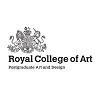
The School of Communication at Royal College of Art (RCA) houses an Animation MA program that requires 180 credits of study over three terms (one year). Launched more than 30 years ago, this multidisciplinary program explores animation, games, film, theater, STEM disciplines, augmented and virtual reality (AR/VR), literature, and media. Throughout the program, students will have opportunities to engage with visiting artists and professionals, participate in workshops, and take field trips to animation studios, archives, museums, and exhibitions.
Over the first two terms of the RCA Animation MA program, students will complete Animation Forms, Methods & Contexts (45 credits); Making Worlds with Others (15 credits); Critical Non/Fiction and Experimental/Expanded Practices (30 credits); and course requirements across RCA (30 credits). All activities for the program take place in classrooms, mixed-use studios, and technical workshop areas.
In the final term of the Animation MA program at Royal College of Art, student animators will apply what they have learned to the production an Independent Research Project worth 60 credits. Final projects will be completed in collaboration with academic and technical staff, and presented to the Examination Board.
Graduates have gone on to win Oscars’ BAFTA’s, and Jury Prizes at Cannes Film Festival. Program alumni have also established careers at a variety of studios. Examples include DreamWorks, Aardman, Passion Pictures, Studio AKA, Hornet USA, Picasso Pictures, Tandem Films, Animade, Blink Productions, FOLK Projects, Not to Scale, Hodgson Films, Model Robot, Ragdoll Productions, and Nexus Studios.
Established in 1837 as the Government School of Design, Royal College of Art is the only entirely postgraduate institution of university status with degrees in art, communications, humanities, and design. Programs at RCA are provided across the Schools of Design, Arts & Humanities, Communication, and Architecture. Serving more than 2,500 students, Royal College of Art is an exempt charity regulated by the Higher Education Funding Council for England (HEFCE).

Griffith Film School at Griffith University is the largest school of its kind in Australia and a Toon Boom Center of Excellence (COE). The school has a Bachelor of Animation program that allows students to collaborate peers across Griffith U’s Queensland College of Art (QCA) and Queensland Conservatorium. Students also have the opportunity to collaborate on productions with partner institutions such as Falmouth University and Beijing Film Academy.
Other program features include masterclass programs delivered by industry professionals from Disney, LucasFilm, WETA FX, and Gobelins Paris; access to state-of-the art studios and labs; workshops and seminars; and participation in exchange study tours and film festivals.
The Bachelor of Animation at Griffith University also has three majors including Animating, CGI Technical Direction, and Art Direction. Students in all programs have the option to work with traditional drawn animation; 2D, 3D, or motion-capture digital animation; experimental media; or 3D puppet or clay animation.
All animation students will have opportunities to work on projects for real clients through LiveLab—Griffith Film School’s commercial production division. The Internship Program at Griffith U provides additional opportunities to gain valuable experience with a local studio such as Pixel Zoo Animation Studio, Liquid Animation, or Alt.VFX.
Graduates of the Bachelor of Animation program at Griffith University are successful animators, educators, and entrepreneurs. For example, Griffith U alum Joe Brumm (1998) created the hit children’s TV series Bluey. He has also won awards such as a Logie, an Australian Academy of Cinema and Television Arts Award (AACTA), and an International Emmy Award.
Other program alumni have gone on to become Character Designers, Visual Effects (VFX) Artists, Illustrators, Storyboard Artists, Production Managers, 2D- 3D- and Stop-Motion Animators, Comics and Graphic Artists, Scriptwriters, Art Directors, Game Artists, and Pre-Visualization Artists.
Established in 1975, Griffith University is named after Sir Samuel Walker Griffith, former Queensland Premier and the first Chief Justice of the High Court of Australia, who was the first in the country to introduce degrees in Environmental Science and Modern Asian Studies. With more than 20 schools and departments managed by 4,000 instructors and staff, Griffith U serves over 55,000 students, making it one of the largest universities in Australia.
The school provides more than 200 degree programs across five physical campuses in South East Queensland, Australia, and the Digital Campus. Griffith University is officially recognized by the Department of Education and Training of Australia. Many Griffith U programs are also individually accredited by accrediting agencies such as the Association to Advance Collegiate Schools of Business (AACSB) and the Australian Institute of Physics (AIP).

The Faculty of Art at Ontario College of Art and Design University (OCAD University or OCAD U) is home to the Experimental Animation program. Leading to a BFA, this four-year, honors degree combines 2D and 3D, stop motion, augmented and virtual reality (AR/VR), and digital compositing with traditional and digital media. Students also have opportunities to develop skills in other areas of art and design through more than 90 elective options and 25 focused minors. Examples include Wearable Technology, Integrated Media, Games and Play, Creative Writing, Drawing and Painting, and on-Screen.
The OCAD University Experimental Animation program provides opportunities to participate in projects with real-world industry partners; summer internships; short, experiential learning experiences across hundreds of organizations; and study abroad experiences at the OCAD U campus in Florence, Italy or another art and design school the university’s Mobility/Exchange Program.
Other program features freelance creative opportunities; automatic membership at the non-profit XSPACE Cultural Centre, which houses the student-run gallery—XSPACE; and the opportunity to participate in Toronto’s largest free art and design exhibition—GradEX.
The Experimental Animation BFA program at Ontario College of Art and Design University prepares students to pursue careers in animation gaming, film production, video, and television.
For students seeking a shorter path to study animation, Ontario College of Art and Design University has an Expanded Animation minor that can be added to any OCAD U major or taken as a post-graduate certificate. A collaboration between the Faculties of Art, Design, and Liberal Arts & Sciences, the minor combines drawing, graphic design, experimentation, and media art.
Course examples include Animation Fundamentals; Exploring Drawing Processes; Animation: Stop Motion; Motion Design; 3D Modeling and Animation; Compositing and Digital Animation; Animated Illustration; Installation: Screen to Space; Advanced Animation Studio; Painting and Digital Imaging; Screenwriting; and History of New Media Art.
OCAD University has an additional option for students seeking flexible continuing education program. The Animation Skills Certificate consists of five courses selected from nine options. Examples include 3D Animation Studio 1: Introduction to Blender; Introduction to Toon Boom Harmony; Character Design Studio; Storyboarding for Media Production; and Stop-Motion Puppet Making Studio.
Across all programs, OCAD U graduates enjoy a more than 90% employment rate. Careers range from entry-level to leadership roles at animation studios, production companies, game design studios, television stations, advertising agencies, marketing firms, and more.
Established in 1876 as Ontario School of Art, Ontario College of Art and Design was the first school in Canada dedicated exclusively to educating aspiring fine and commercial artists. Serving approximately 4,190 students, OCAD U is also the country’s largest art, media, and design school. Ontario College of Art and Design provides nearly 30 degree programs and close to 30 minors across the Faculties of Art, Design, and Arts & Science.

Nanyang Technological University, Singapore (NTU Singapore or NTU) is home to the College of Humanities, Arts, and Social Sciences (CoHASS). Within the college is the School of Art, Design and Media (ADM), which provides interdisciplinary programs taught in a collaborative environment. Other ADM features include access to more than 50 labs, media studios, and editing suites; participation in fieldwork and a 10-week internship; a fully stocked library with over 19,000 titles; and study abroad opportunities in more than 60 countries.
The ADM at NTU Singapore also houses a Media Art BFA program that combines animation, filmmaking, games, and photography. Students may specialize in Digital Animation, Digital Filmmaking, or Photography & Digital Imaging. The program also allows students to enhance the degree through a minor within CoHASS or any other NTU school. Minor examples include Art History; Communication Studies; Design and Systems Thinking; and Creative Writing.
Course examples for the NTU Media Art BFA include Issues in Animation Practice; Writing for Animation; 3D Character Animation; Digital Compositing; Graphic Storytelling; Visual Effects (VFX) I-II; Cinematic Concepts and Motion Capture Applications; Game Design; 3D Production; Rigging for Animation; Lighting and Rendering Pipeline; Film Editing; Storyboarding & Production Design; and Advanced Stop Motion.
The Media Art BFA program at Nanyang Technological University, Singapore culminates with the nine-unit Final Year Project (FYP). Graduates are prepared to pursue careers in animation, VFX, game art and design, film, and advertising. Some Media Art graduates go on to pursue an advanced degree such as NTU’s Art, Design and Media MA (ADM MA). The school also has an ADM PhD program.
Students in both programs benefit from frequent ADM workshops, screening, and exhibitions; a designated graduate research lounge; and graduate communities, such TGIF (Thoughtful Gathering and Insightful Friday) and The Graduate Club. MA and PhD students also have access to animation and editing suites; motion-capture, virtual reality (VR), and sound mixing studios; 3D printing, print, and digital sound labs; movie theatres; and a dark room,
The graduate ADM programs allow students to customize the curriculum to their academic and career goals. In addition, the School of Art, Design and Media has six formal graduate research areas. Options include Design Studies; Visual Art and Digital Humanities; Art, Design and Media Histories and Criticism; Audiovisual Art; Cultural Identity and Heritage, and Southeast Asian Art, Design, and Media. The MA also has a Digital Humanities Research Cluster.
The Audiovisual Art area is ideal for Animators. The area explores character animation, experimental filmmaking, VR film, real-time 3D storytelling, sound art, motion graphics, stop-motion, data visualizations, art installation, and sound art.
Graduates of the ADM MA and PhD programs at Nanyang Technological University, Singapore are prepared for faculty positions, research careers, and advanced roles in all areas of animation, games, film and television, sound design, advertising, and visualization, among others.
Nanyang Technological University, Singapore traces its roots back to 1981, when Nanyang Technological Institute was established as a teaching university on the grounds of Nanyang University. Nanyang, Singapore was officially established in 1991. Today, this research-intensive school serves 35,000 students, making it the second largest public university in Singapore. Nanyang Technological University, Singapore provides hundreds of programs at all degree levels across four colleges and 14 schools.
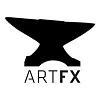
ARTFX is a Toon Boom Center of Excellence that houses the schools of Animation, Cinema, Visual Effects, and Video Games. The Animation School has a program with 3D Character Animation and 2D Film Animation options leading to an MA degree. All students benefit from workshops led by professionals in the industry; masterclasses and other activities with partner studios such as Moving Picture Company (MPC), Illumination, DNEG, Framestore, Lighthouse Studios, Cinesite, and Mikros Animation.
Other program features include access to state-of-the-art classrooms, labs and studios equipped with industry-standard software such as Storyboard Pro, Affinity, Krita, SideFX Houdini, Autodesk Maya, Dragonframe, ZBrush, Unreal Engine, and Affinity Photo; one mandatory internship lasting six weeks (students may complete multiple internships); and RECA—an association founded by ARTFX that consists of 28 industry-recognized French Animation Film Schools.
In the first year of the 3D Character Animation and 2D Film Animation programs, all students will complete the common core. In addition to completing foundation courses during this time, students will collaborate and experiment with techniques in film, animation, and games; develop storytelling skills; and prepare projects for an exhibition and individual portfolios.
In the following years students will complete additional projects and reels related to their degree. In the final year of the Animation MA programs at ARTFX, students will create and direct an animated short film that will be screened by a professional jury. Graduation films have won dozens of awards and received more than 900 selections in festivals around the world.
Upon completion of these five-year programs, animation students will have the opportunity to participate in the End-of-Studies Job Dating Session, which attracts French and international recruiters from major Animation studios. To date, ARTFX animation graduates have enjoyed a 95% job placement rate within six months to a year after graduating.
Graduates are prepared to pursue advanced roles in areas such as 2D animation, 3D character animation, puppet animation, storyboard art, game art and design, character design, background art, concept art, and layout design. Program alumni have worked on productions such as Ready Player One, The Lion King, Star Wars Episode VIII, The Minions, and Gravity.
ARTFX, School of Digital Arts was founded in 2004 by French Special Effects (SFX) pioneer Gilbert Kiner. Launched in Montpellier, the school’s first program was 3D Animation and SFX. Today, ARTFX employs 80 professors and 50 permanent staff that serve 1,100 students across three campuses in Paris, Lille, and Montpellier. This independent art school is registered with the Répertoire National des Certifications Professionnelles (RNCP).
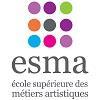
École Supérieure des Métiers Artistiques (ESMA) has a five-year 3D Animation, Cinema & Special Effects program that leads to a master’s degree. Open to students with a BAC, the program begins with an integrated entertainment preparatory year that covers the fundamentals of Animation and the industry. In the following years of the program, students will work their way through the animation production pipeline. The program ends with an industry-ready animated short film created in groups of four to seven students.
ESMA animation graduates enjoy a 92% employment rate within six months of graduation. Potential job titles include 3D Animator, FX Artist, Technical Director, Project manager, Concept Artist, Modeler, 3D Graphic Designer, CG Supervisor, Compositing Artist, 3D Studio Manager, and Director.
ESMA Animation alumni have been recruited by major studios and agencies such Industrial Light & Magic (ILM), Sony Pictures Imageworks, Weta Digital, Moving Picture Company (MPC), Ubisoft, Illumination, Framestore, Aardman, Fontes Architecture, Untold, A+Architecture, ba&sh, IKKS, and Mikros Animation.
Founded in 1958, the École Supérieure des Métiers Artistiques (ESMA) campus is now located in the Creative Campus, which was built in Montpellier’s new district—The Creative City. The new location is outfitted with state-of-the-art classrooms, sound studios, an auditorium, and the FabLab. Other ESMA campuses include Montreal, Canada, and Lyon, Nantes, Toulouse, Rennes, and Bourdeaux, France.

Beijing Film Academy (BFA) is China’s only film academy and the largest film school in Asia. In 2000, BFA launched the Animation School—formerly the Animation major in the Department of Fine Arts—and the first ever school of animation in the field of higher education in China. BFA Animation School leadership consists of 21 teachers and staff, including one professor, three associates, five lecturers, and eight associate lecturers. Beijing Film Academy also hosts famous animators and cartoonists from China and around the world.
With nearly 360 students enrolled in BA, MFA, PhD, and non-degree programs, the Animation School focuses on the following disciplines: Computer Animation, Comics, Game Design, Art of Animation, Film, and Art Design. The MFA has formal Game Design, Stop-Motion Film, Anime Planning, and Animation Product Design research areas. For the PhD program, students can focus in Research on Animation Theory.
Students in all Beijing Film Academy programs benefit from opportunities to collaborate on projects with Massachusetts Institute of Technology (MIT), Gobelins, Straight Entertainment (Hollywood, CA), and Taylor’s University; interdisciplinary studies; the opportunity to participate in the student film festival known as Cinerent Award; participation in exchange workshops with the Korean Academy of Film Art (KAFA) and the Netherland Film Academy (NFA); and long-term cooperative relationships with major studios in China and abroad.
Graduates of the Animation Programs at Beijing Film Academy are prepared to pursue roles in areas such as animation, computer games design, cartooning, television, visual effects (VFX), multimedia design, web design, research, and art education. Program alumni are Animators, Directors, Educators, Researchers, Designers, Filmmakers, and VFX Artists.
Graduates have worked on productions that have won awards at the Cannes Film Festival, Venice Film Festival, Berlin International Film Festival, Shanghai International Film Festival, and the Tokyo International Film Festival.
Beijing Film Academy was established in 1950 as the Performance Art Institution of the Film Bureau of the Ministry of Culture. When it opened, the school had just 38 students. Today, BFA serves approximately 4,000 students across 15 departments and schools. The school provides undergraduate, graduate, PhD, and short-term training programs. Around 72% of BFA students are enrolled in four majors including Film Directing, Performing Arts, Cinematography, and Chinese Language. Beijing Film Academy is recognized by the Beijing Municipal Commission of Education.
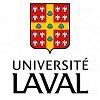
Université Laval houses the Faculty of Planning, Architecture, Art and Design, home to the School of Design. Within the school are two paths to study animation: the Bachelor of Art and Science of Animation (BASA) and a certificate in the Art and Science of Animation (CASA).
Consisting of 90 credits taken over three years, the BASA is a collaborative, project-based program that explores games, cinema, 3D virtual environments, and design. Students may also combine the BASA with other technical or university programs such as Architecture, Medicine, Law, Museology, Biology, Physics, or Music. This allows students to pursue careers in specialized fields beyond entertainment. Examples include Medical Animation; 3D Animation for Construction or Interior Design; Visual Litigation; and Aeronautical Simulation.
BASA students will take courses such as History and Aesthetics of Animation I-II; 2D Digital Animation I-II; 3D Animation I-II; Dynamic Drawing I-II; Production Management in Animation; and Studio I-II.
All Université Laval BASA students have opportunities to complete group and individual projects; complete an internship at a major studio; and design a professional portfolio of their best work. Students will also participate in the Université Laval Placement Service (SPLA) event, which attracts employers from the Animation industry.
The Art and Science of Animation certificate at Université Laval is a 30 credit hour, fully online program that can be completed in one year, full-time. Students can complete the certificate as a standalone program or as part of a multidisciplinary bachelor’s degree program. CASA course examples include 3D Modeling and Animation; Digital Image in Animation, Storyboarding; Animation Methodology; History and Aesthetics of Video Games; Sound Dimension of Animation; and Animation Production.
All BASA and CASA students at Université Laval have access to state-of-the-art digital video studios; a motion capture and facial capture system; sound capture and editing laboratories; and an entertainment room with green screen. Graduates go on to pursue roles across all industries that utilize animation.
Université Laval dates back to 1663, when Monsignor de Laval founded Séminaire de Québec to train the colony’s priests. The school was officially established in 1852 after Queen Victoria signed a royal charter allowing Séminaire de Québec to confer degrees and operate as a university. Today, Université Laval employs more than 10,440 professors, lecturers and staff that serve over 47,000 students.
The school provides 600 programs of study across 17 faculties and 60+ departments, schools, and institutes. Université Laval also provides more than 150 and 2,500 courses 100% online.

University of Technology Sydney (UTS) is home to the Faculty of Arts and Social Sciences (FASS), which houses the School of Communication. Within the school are several paths to study animation including the Bachelor of Animation Production (BAP); Dual BAP/Bachelor of Creative Intelligence and Innovation; and a Dual BAP/Bachelor of International Studies.
All undergraduate UTS animation programs feature hands-on experience in the classroom, studios, and through internships; elective options that allow students to develop skills in additional areas of Animation; and Animation studio courses. Students in these industry-focused programs also have opportunities to work on real projects with clients such as ABC Podcasts, VIVID, and the Australia Piano Quartet.
UTS also has long-term partnerships with local animation studios such as Animal Logic, Mighty Nice, Flying Cheeky Little Media, Bark Productions, and Dave Enterprises. UTS partnerships provide additional opportunities to work in Animation before graduation.
The Bachelor of Animation Production at University of Technology Sydney is a three year, full-time program that requires 144 credits, including 108 in core Animation production subjects, 12 in Communication core subjects, and 24 in electives. Course examples include 2D Animation Introduction; Narrative Experimentations in Animation; Digital Media Industries; Introduction to Hybrid Animation; Animation Character Rigging; and Animation Practice.
The BAP program at University of Technology Sydney culminates with an Animation Industry Project, worth 12 credits. During this course, students will work in teams to create short original works in collaboration with an animation industry partner. Students will gain field experience and skills in creative negotiation, presentations, project management, and team work.
Graduates are prepared to pursue titles such as Animator, Character Designer, Concept Artist, VFX Artist, Effects (FX) Animator, Director, Animation Scriptwriter, Stop Frame Model Animator (Claymation), Matchmover/3D Tracker, Augmented and Virtual Reality (AR/VR) Designer, Storyboard Artist, Rigger, Scriptwriter, Editor, Previsualization Artist (Previs) Producer, Modeler, and Compositor.
Dual Degree students have access to everything the BAP program has to offer, and they will complete most of the same Animation coursework. Innovation students will take additional courses such as Transdisciplinary Practice at the Cutting Edge; Leading Innovation; Envisioning Futures; New Knowledge-Making Lab; Past, Present, Future of Innovation; and Creativity and Complexity. International Studies students will take additional courses such as Intercultural Communication; International Research Methods; and German Language and Culture.
The Dual BAP/Bachelor of Creative Intelligence and Innovation at UTS takes four years to complete. The BAP/Bachelor of International Studies takes five years to complete.
At the graduate level, UTS students can earn a Master of Animation and Visualization (MAV). This program was developed in partnership with Animal Logic and provided through the UTS Animal Logic Academy. Program features include a learning modeled on real-world production work structures in a custom-built digital studio; collaborative work practices; and mentoring by active industry professionals. Course examples for the program include the Connected Studio; Challenge Studio; and Collaboration Studio.
The UTS MAV takes one year to complete, full-time. Graduates are prepared to pursue advanced roles in all areas of animation, visual effects (VFX), game art and design, augmented and virtual reality (AR/VR), visualization, simulations, and advertising, among others.
University of Technology Sydney (UTS) traces its roots back to 1964 when the New South Wales Institute of Technology was established. On January 26, 1988, the institute became the University of Technology, Sydney. On January 1, 1990, the Institute of Technical and Adult Teacher Education and the Kuring-gai College of Advanced Education became part of UTS. On August 15, 2015, the comma was removed from the University’s title to become University of Technology Sydney.
Today, UTS is a public research university that serves approximately 44,615, making it one of the largest universities in Australia. University of Technology Sydney provides over 130 undergraduate and 210 postgraduate programs in disciplines from Design, Architecture and Building to Information Technology.

Through a partnership with Epic Games, Escape Studios was the first Unreal Authorized Training Center in the UK. Also an Unreal Engine Academic Partner and Houdini Certified School, Escape Studios provides programs that are developed and maintained in partnership with Industrial Light & Magic (ILM), PlayStation London, DNEG, Moving Picture Company (MPC), Jellyfish Pictures, Cinesite, Framestore, and Mikros Animation. The school’s partnerships with these major studios provide endless opportunities for students to network with established professionals in the industry.
Other Escape Studios features include programs in Animation, Games, Visual Effects (VFX), and Motion Graphics; courses led by instructors who have worked with Disney, DreamWorks, Fox, and Warner Bros; intensive training sessions on industry-standard software such as Maya and Toon Boom Harmony; access to state-of-the-art studios and equipment; and internships with major studio for four weeks, three months, or a year. Students may also participate in the Annual VFX Festival hosted by Escape Studios.
Escape Studios has 13 paths to study animation. For students seeking a shorter program, the school has eight-, 10-, 12-, 18- and 20-week options in everything from Character and Creature Creation to 3D Animation. Degree-seekers have five options including the BA (Hons)/MArt in The Art of Computer Animation (3D); BA (Hons)/MArt in The Art of Computer Animation (2D); the BSc (Hons)/MSci in Character Creation for Animation, Games & VFX; a 3D Animation MA; and the MA in Character & Creature Creation.
Students at Escape Studios will learn in classrooms that simulate real animation studios. They will also have the opportunity to master all areas of the Animation production pipeline. Graduates are prepared to work in all areas of animation, film, game art and design, television, advertising, and more.
Escape Studios graduates have won 500 awards, 77 honorable mentions, 163 finalist nods, and 25 nominations. worked on productions and games such as Harry Potter, Assassin’s Creed, Top Gun: Maverick, Star Wars, Avengers, Unchartered 2, Captain America: Civil War, The Batman, Ex Machina, Fantastic Beasts and Where to Find Them, Gravity, Black Panther: Wakanda Forever; Interstellar, Star Wars: The Force Awakens, Forza Horizon, and The Jungle Book. Escapees have also gone on to launch their own studios or freelance businesses.
Escape Studios was established in 2002. To date, the school has produced 4,000 alumni known as “Escapees.” Escape Studios provides seven BA and BSc programs, five MA options, dozens of short programs, and industry training in VFX Compositing, Houdini, and Unreal Engine. These options can be completed on campus in London or entirely online.

Media Design School (MDS) is the only Unity Authorized Training and Certification partner in New Zealand, and a Houdini Certified School. MDS is also home to country’s oldest 3D Animation program. Accredited by the New Zealand Qualifications Authority (NZQA), which administers the New Zealand Qualifications Framework (NZQF), the program leads to a Bachelor of Art & Design in 3D Animation & VFX.
Students in this 420-credit, project-based program can complete their studies on campus, online, or a combination of the two (hybrid). Student animators will develop technical skills in studio classrooms and state-of-the-art production facilities. First year students will complete the Foundation Mini-Project, worth 20 credits. This component consists of a short 3D production. In the second year of the MDS 3D Animation & VFX program, students will select a specialization in VFX and complete a 15-credit mini project.
Courses examples for the program include Animation: Mechanics, Expressions and Gestures; Visual Effects 2D Compositing; 3D Modeling; Animation: Workflow and Principles; Digital Art I-II; Motion Design Production Techniques; Animation: Non Verbal Communication; 3D Rendering; Motion Design Animation; Advanced 3D Technical Studies; and Advanced Creature Animation.
In the final year of the program (year three), students will complete Team Production I-II, worth a total 85 credits. This component consists of an industry-ready short film. Each student will also complete Advanced Individual Production worth 20 credits. This component allows students to complete a project in their area of specialization. This major production will be entered into the international film festival circuit.
Student films have been official selections or won awards the LA Shorts International Film Festival; San Diego Comic-Con International Independent Film Festival (CCI-IFF); SXSW Film Festival; Toronto Shorts Film Festival; Irvine International Film Fest; SIGGRAPH Asia; Rochester International Film Festival; Annecy International Film Festival; Palm Springs International Animation Fest; British Animation Film Festival; Scandinavian International Film Festival; and the Nashville Film Festival.
Graduates of the 3D Animation & VFX program at Media Design School are prepared to pursue titles such as Animator, Technical Director, Compositor, VFX Artist, 3D Modeler, and Effects Designer. Program alumni have worked on major productions such Avatar and The Hobbit. They have also landed positions as major studios such as Microsoft UK, DreamWorks, Disney, Weta FX, Warner Bros., and LucasFilm Singapore. Program alumni have also worked on major productions such as The Hobbit and Avatar.
Founded in 1998, Media Design School began with a small collection of diploma programs. Today, this private post-secondary institution provides programs in 3D Animation & VFX, Artificial Intelligence (AI), Augmented and Virtual Reality (AR/VR), Game Art, Game Programming, Graphic Design, Interactive Design, Motion Design, Digital Transformation, Information Technology, and Creative Advertising. For students seeking Micro-Credentials or Short Courses, MDS provides more than 30 in-demand options. Media Design School of a member of the Laureate International Universities Network.
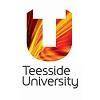
Teesside University is the first Adobe Creative Campus in Europe. The school also provides a number ScreenSkills-recognized Animation Programs at both the undergraduate and graduate levels. Housed in the School of Computing, Engineering & Digital Technologies, undergraduate program options include BA degrees in Animation; 2D Animation and Stop Motion; Concept Art; and Visual Effects and Motion Graphics.
At the graduate level, Teesside University has MA programs in 2D Animation and Stop Motion; Applied Immersive Technology (Creative Industries); Animation; Concept Art; Applied Immersive Technology (Creative Industries with Advanced Practice); and Visual Effects. All options are ScreenSkills Recognized.
Across programs, students benefit participation in ExpoTees—Teesside’s annual exposition of final year student works; strategic partnerships major studios and companies such as Industrial Light & Magic (ILM), Double Eleven, Ubisoft, Animmersion, and Creative Assembly; access to state-of-the-art engineering and production facilities; and networking opportunities with industry professionals through Animex—Teesside’s International Festival of Animation and Computer Games. Animex attracts professionals from Disney, Rockstar Games, Pixar, and Sony.
All undergraduate programs provide the option to complete a foundation year or internship. Graduates may also complete an internship in their final year over the summer. Graduate internships last 11 weeks. Programs that last two years provide the option to complete an internship over three months in at the start of the second year of the program.
Students in the BA and MA Animation programs benefit from courses taught by instructors who are active in the animation, film, and television industries. Course examples across programs include 2D Digital Art; Anatomy of a Film; Visual Development for the Moving Image; Art for Animation; 2D Animated Performance; Script and Pitch; Concept Art for Games and Animation; 3D Character Animation; Organic Modeling and Texturing; Creative Animation; Advanced Practice; and Production Design.
The animation programs at Teesside University culminate with a film sequence or short film. Across programs, graduates have gone on to work for Industrial Light & Magic (ILM), Rockstar North, Imaginarium Productions, Blue Zoo Animation Studio, and Animal Logic. Program alumni have also worked on films and AAA games such as Star Wars: The Last Jedi, Red Dead Redemption 2; and Spider-Man: Far From Home.
Teesside University was founded as Constantine Technical College in 1930. The school serves approximately 22,700 students enrolled in dozens of programs across five schools including Arts & Creative Industries; Computing, Engineering & Digital Technologies; Health & Life Sciences; Social Sciences, Humanities & Law; and Teesside University International Business School. Teesside University has campuses in Middlesbrough and London, England.
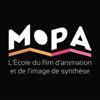
MoPA (School of 3D Animation) has partnerships with major studios that often lead masterclasses, attend juries, and provide internship opportunities. Just a few MoPA partners include DreamWorks Animation, DNEG, Reel FX, Pearl Studio, Framestore, Aardman, Mikros, and Axis Studios.
The school focuses on project-based teaching that emphasizes collaboration and teamwork. Leading to an Expert Diploma in 3D Design, Production, and Animation (Baccalaureate), the program includes Cycle 1: Years 1-3; and Cycle 2: Years 4 and 5. During the preparatory year (year one), students engage in animated film, video, and photography workshops; multiple projects using a wide range of animation and filmmaking techniques; art history coursework; and Adobe Creative Suite courses.
In Cycle 1, students will work on projects individually and in groups. Students will work their way through the entire production pipeline of an animated short film. Areas explored include film analysis, storyboarding, modeling, character design, script, and sound illustration. In this Cycle, students will also develop advanced skills in Maya, Nuke, Zbrush, V-Ray, and Substance.
In Cycle 2 of the MoPA Animation program at students will select a specialization in Animation Professions or Image Professions. Students will also work in teams of four to six to produce a short animated film in a real studio setting.
Other program features include access to 200 computers across MoPA’s studios; access to the same equipment and software used in professional studios; internship opportunities; and study abroad experiences.
The MoPA diploma program culminates with the Final Year Jury in the Theatre of Arles, which attracts 2,000 artists and spectators. After this public screening, student films will begin their journey through the international film festival circuit.
MoPA graduates are prepared to pursue careers in pre-production, production, and post-production in areas such as animation, film, television, and game design. Possible job titles include 3D Character Animator, Production Manager, Special Effects Artist, Director, Matte Painter, Sound Designer, Layout Artist, Storyboarder, Concept Artist, Screenwriter, and Artistic Director.
MoPA School of Animation dates back to 1988 when it launched as Supinfocom School—the first French institution of its kind devoted entirely to CGI. Supinfocom became MoPA School of Animation in 2015. In 2022, MoPA became a member of a network of schools known as the BRASSART Group. Located across 14 cities in France, the Group specializes in 3D Animation, Graphic Art and Design, Video Games, and Audiovisuals. MoPA is also a member Réseau des Écoles Françaises du Cinéma d'Animation (RECA)—a network of 28 French animation schools recognized by the professional community in France and around the world.
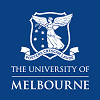
University of Melbourne is home to Victorian College of the Arts (VCA). Established in 1972, the VCA provides programs across the performing arts, media, and visual arts. Part of the Faculty of Fine Arts and Music and co-located with the Melbourne Conservatorium of Music, the VCA also houses an Animation BFA that takes just three years to complete, full-time.
This professional program emphasizes learning that takes place in an intensive and experimental studio-based environment that allows collaboration with peers across all programs in the VCA. Courses for the program explore animation art, character design, worldbuilding, storyboarding, technical production methods, experimentation, screenwriting, research, and idea development.
Course examples include Stories of Place; Animation History and Research; Animation Studio 1-3; Writing Animation; Introduction to Storytelling; Animation Lab 1-3; and Collaborative Production.
All Animation BFA have access to state-of-the-art production facilities including animation and stop-motion studios; editing, mixing, and sound recording suites; viewing rooms for dailies; HD and audio post-production spaces; and cinemas that seat 90 to 220 people.
The Animation BFA program at University of Melbourne culminates with an animated short film. Each student will have the opportunity to animate, direct, write, and edit their own films. Graduates are prepared for graduate study or to pursue a career in the art and entertainment industries. Possible roles include Animator (Film and Television), Screenwriter for Animation, Motion Graphics Artist, Game Artist, Exhibition Artist, Animator (Advertising), Storyboard Artist, Art Educator, and Installation Artist.
Established in 1853, University of Melbourne is the oldest University in Victoria, and the second-oldest in Australia. Serving more than 52,000 students, University of Melbourne is also one of the top five largest universities in Australia. The school provides nearly 700 programs across 120 majors and approximately 90 study areas. University of Melbourne is officially recognized by the Department of Education and Training of Australia, with individual program accreditation by agencies such as the Association to Advance Collegiate Schools of Business (AACSB) and the European Quality Improvement System (EQUIS).

Tokyo Animation College has several paths to study animation. Options include Anime Production (three years), Animator/Animation (two years), and Character Design (two years). Students in all programs have access to state-of-the-art labs and studios such the animation and comic labs; drawing, computer, and training rooms; animation, manga, illustration, and acting practice rooms; vocal, recording, and post-recording studios; archive rooms; and free spaces.
The three-year Anime Production program explores TV animation, 3D animation art, theatre animation production, 3DCG, and web animation. Course examples for the program include Anime Production I-II; Character Design; Directing Techniques; Advanced Flash Anime; Color Design; Filming/Editing; Advanced 3DCG; Background Arts; Advanced Sketching I-IV; Short Animation Production; and Business.
Anime Production students will also complete Graduation Production I-III, culminating with a full-length animated production.
The two-year Animator/Animation program begins with basic skills such as drawing, sketching, and motion. Students will move on to mastering animation production processes such as color/filming editorial techniques, and background art. Students in this program will take most of the same courses as students in the Anime Production program. The program culminates with a final project (Animation Production).
Housed in the Comic Department, Character Design is a two-year program that includes courses such as Basic Sketching I-IV; Production Development; Character Design I-II; Advanced Flash Anime; Comic Expression Techniques I-III; 3D Design; Advanced Sketching I-II; Practical 3DCG; and Color Techniques. Students in this program will also complete several projects, a graduation production, and a final presentation.
Graduates of the animation programs at Tokyo Animation College are prepared to pursue roles such as Animator (Film), Flash Animator, Technical Director, Producer, CG Director, Key-Animator, Character Designer, Animator (Television), Production Assistant, Film Director, Digital Cell-Painter, Animation Supervisor, Storyboard Artist, Inbetweener, Comic Book Artist, Art Director, Cartoonist, Production Controller, and Animator (Advertising).
Tokyo Animation College dates to 1979 when the Music School was founded. In 1984, the school became a specialized training institution authorized by the Tokyo Metropolitan Government. In addition to state-of-the-art production facilities, Tokyo Animation College now houses dorms, libraries, reference centers, and a career center.

Image Campus (Image) is South America’s first video game school and its first Unreal Authorized Training Center. Image is also one of the few schools in the region to provide comprehensive training in both 2D and 3D Animation. Other specializations include Production and Animation with Blender; Motion Graphics; and Blender. All animation programs explore the 12 Principles of Animation.
Across programs, students will complete courses and projects in modules. Examples include Character Animation; Body Mechanics; Simulations in Maya; Drawing for Animation; Animated Camera; Performance of Characters; Procedural Modeling; Shape Layers and text Animation; Introduction to Programming in Blender; Simulations; 3D Space; and Character Rigging.
All students will learn the concepts and techniques used by industry giants such as Pixar, Disney, and DreamWorks; they will participate in intensive workshops and seminars; and complete an internship. Students have the option to complete any Image program on campus or 100% online. Programs take four to nine months to complete or three years. Shorter programs lead to a Certificate of Approval. Three-year programs lead to a post-secondary degree.
Graduates of the animation programs at Image Campus will enter the job market with a demo reel or portfolio of their best work. Around 95% of Image Campus Animation alumni are working in the industry. Graduates are Character Animators, Game Artists, 3D Animators for Videogames, Advertising Animators, Cartoon Studio Animators, Concept Artists, 3D Designers, Layout Artists, Animation Directors, Visual Effects (VFX) Artists, Video Compositors, and Simulation Artists.
Image Campus alumni have been hired at places such as AMC Networks, Ubisoft, Warner Media, Dwarf, Methanoia, Plenty, Nimble Giant Entertainment, Bleed, Collider Craftworks, Malditomaus, Dedalord Game Studio, 3dar - Virtual Reality, Jam City, Leder Games, Artear Multimedia, Gizmo, Plenty Studio, Globant, Paka, BITT, and Rudo Company.
Established in 2000, Image Campus provides programs in Animation, 3D, Visual Effects (VFX), Art for Videogames, Augmented and Virtual Reality (AR/VR), Multimedia, Illustration, and Audio. In addition to degree programs, Image Campus has short programs that can be completed in four to nine months. The programs at Image Campus are delivered on-campus, online, and via streaming.

The School of Creative Arts at University of Hertfordshire (UH or Herts) has three undergraduate paths to study animation. Options include BA degrees in 2D Digital Animation; 3D Animation & Visual Effects (VFX); and Comics and Concept Art. At the graduate level, the school has MA programs in Animation, and Character and Creature Animation. This fully remote program is provided through UH Online.
Accredited by SideFX and the International Association of Film and Television Schools (CILECT), all programs feature courses and projects led by professional Animators who have worked on productions such as Thor, Harry Potter, The Hobbit, Tom & Jerry, Doctor Who, and The Avengers.
Course examples across BA programs include Applying CG; Creativity, Concept & Story; Animated Thinking; Progressing 3D and Visual Effects; Moving Visions; Design, Interactivity & Professional Practices; Progressing 2D Animation; Concepts in Motion: Articulated Research & Writing; Progressing Character & Concept Art; Pre-Production for 2D Animation; Moving Visions; Pre-Production for 3D Animation; Comics & Professional Practices; and Pre-Production for Comics and Concept Art.
The 2D Digital Animation and 3D Animation & VFX BA programs also provide opportunities to complete several live projects, including a final film project to be screened at the School of Creative Arts Animation Exposé. In addition, BA students will complete a number of simulated real-world projects; a portfolio of their best work; and an internship.
Students have opportunities to complete a short or year-long study abroad experience at partner universities across Europe, Africa, South America, Asia, Canada, and Australia.
The Animation MA at University of Hertfordshire is a multidisciplinary program that emphasizes project-based learning. Students in this program will actively participate in art- and software-based workshops and lectures; seminars; work placements; and a study abroad year. Students will complete 180 credits across five modules. These include Practice 1: Developing Skills (30 credits); Digital Media: Sources and Significance (30 credits); Practice 2: Creative Project Development (30 credits); Exploring Professional Practice (30 credits); and Major Study: Animation (60 credits).
All UH animation students have the opportunity to complete a simulated brief in collaboration with Animation alumni and organizations such as National Poetry Day and Promise.
The Character and Creature Animation MA at Herts allows students to study at their own pace. Ideal for professionals already working in the industry or those seeking a career change, the CCA MA consists of the following core modules: Introduction to Animation Skills (pre-requisite); Animal & Creature Animation (30 credits); Character Performance (30 credits); Locomotion and Mechanics for Animation (30 credits); and The Animation Industry: Preparing for a Career (30 credits).
The program culminates with the 60 credit hour Graduation Portfolio module, consisting of a several larger works organized into a professional portfolio.
Graduates of the animation programs at University of Hertfordshire enjoy a near-perfect 96.5% employment rate. Program alumni are prepared to pursue titles such as 2D or 3D Animator (Film), Game Animator, Character Designer, Visual Affects Artist, Creature Animator, and Creative Director.
School of Creative Arts alumni have gone on to win Oscars, Emmy’s, and BAFTAs for their work on productions such as Start Wars, Game of Thrones, Harry Potter, The Lion King, Avatar, The Chronicles of Narnia, The Jungle Book, Inception, and Gravity. HU Animation alumni have also been recruited by major studios such as Industrial Light & Magic (ILM), Sony, Blue Zoo, and Creative Assembly.
University of Hertfordshire (UH) was founded in 1952 as Hatfield Technical College. Serving 1,500 students, the school specialized Aeronautical Engineering, the Natural Sciences, and Mechanical Engineering. Today, University of Hertfordshire serves approximately 32,000 students from more than 140 countries with access to over 550 carer-focused degree options. UH operates across eight schools and two campuses in Hatfield – Hertfordshire and London.
Lucerne School of Design, Film and Art is oldest College of Art and Design in Central Switzerland. Part of Lucerne University of Applied Sciences and Arts (HSLU), the school provides two paths to study animation. At the undergraduate level, students can earn a BA in Film with a specialization in Animation. Students may focus in Animation 2D or 3D.
At the graduate level, Lucerne has an Animation MA that combines hands-on workshops, seminars, and coursework that explores format development, production processes, story development, virtual reality (VR), film history, experimentation, animation history and theory, artificial intelligence (AI), concept and design, and media history. Throughout the program, students will also have opportunities to work with mentors and interact with guest lecturers from the industry. Trips to festivals and professional conferences are also part of the program.
Graduates of the Lucerne School of Design, Film and Art MA program have gone on to become Animation Filmmakers, Game Artists, Film Directors, Researchers, Art Directors, and Professors. Program alumni work at major film and animation studios, game design studios, television networks, advertising agencies, museums, and universities.
The Lucerne Film BA with a specialization in Animation covers the 12 Principles of Animation. The curriculum also consists of modules, team-building projects (short films), workshops, individual projects (short films), lectures, and a professional internship.
Course examples and topics for the program include Animatic; Narration by Animation; Character Design, Background Design, Layout; Animation I-III; Compositing; Dramaturgy in Short Formats, Leading a Team; Expanded Animation I-II; Motion Graphics; Experimental Narration; VFX I-II; Stop Motion: Motion Control; Simple Animations in CGI; and Research of a Visual World.
The Animation BA program culminates with a thesis project and a portfolio of the student's best work. Graduates of the program are 2D Animators, Directors, Producers, Illustrators, and Game Artists.
Lucerne School of Design, Film and Art was founded in 1877 as Lucerne School of Arts and Crafts, making it the oldest College of Art and Design in Central Switzerland. The school became part Lucerne University of Applied Sciences and Arts in 1997. Today, Lucerne School of Design, Film and Art serves more than 900 students enrolled in 20 programs leading to a bachelor’s or master’s degree.
Serving more than 8,300 degree-seeking students and 12,000 continuing and executive education students, Lucerne University of Applied Sciences and Arts is the largest university level institution in Central Switzerland. Founded on January 1, 1997, Lucerne employs approximately 2,000 professionals, which also makes it one of the largest employers in Central Switzerland. Programs at Lucerne are provided across the following areas: Engineering and Architecture; Design, Film and Art; Music; Computer Science; Social Work; Health Sciences; and Business.

The School of the Arts, Media, Performance & Design (AMPD) at York University (York U) provides two paths to study animation: the BA in Digital Media Arts (DMA) and Media Arts BFA. The DMA BA is provided in partnership Lassonde School of Engineering and it is Ontario’s only degree program that integrates Computer Science, Art, and Engineering.
The program has three focus areas including Digital Media Game Arts, Digital Media Arts, and Digital Media Development. Students in all areas will begin the DMA program with an 18-month common core. The Digital Media Game Arts focus features courses such as Introduction to 3D Animation; Interactive Sonic Arts; Game Mechanics; Time-Based Art: Video in the Expanded Field; and Generative and Parametric 3D Modeling for the Arts.
Sample Digital Media Arts courses include Artificial Life, Generative Art, and Creative Code; Publishing in Digital Media; Modeling for 3D; Introduction to Interactive Digital Media I-II; and Making Interactive New Media Art. In Digital Media Development, students will take courses such as Introduction to Animation; Simulation and Animation for Computer Games; Interactive Sonic Arts; Advanced Topics in 3D Computer Graphics; and Introduction to Virtual Reality.
Other program features include collaborative project development courses; opportunities to gain experience through the York University Technology Internship Program; public showings at the Ontario Science Centre, Digifest, and Interaccess; and access to state-of-the-art classrooms, studios, labs, and research facilities.
The DMA programs at York University culminate with the Digital Media capstone project. Graduates are prepared to pursue careers across the entertainment, media, publishing, television production, advertising, and other fields. Program alumni have gone on to become Animators, VFX Artists, Cartoonists, Game Artists, Illustrators, UI/UX Designers, Art Directors, AI Software Developers, and New Media Artists.
The Media Arts BFA program explores animation; mobile, interactive, and immersive media; storytelling; augmented and virtual reality (AR/VR); gaming; interactive cinema; artificial intelligence (AI); social media; and sound arts. Course examples include Introduction to 3D Animation; Animation and New Media; The Art of Animating; Games and Media; Virtual Worldbuilding: Methods and Issues; Motion Capture: Performance and Interactivity; Transmedia Storytelling; and Time-Based Art: Video in the Expanded Field.
All York U Media Arts BFA students have access to state-of-the-art facilities, labs, and studios; masterclasses led by industry professionals; immersive workshops; and networking opportunities across the media and creative industries.
The Media Arts BFA program culminates with a capstone project and a field placement in the media industries, including content creation on campus at York U’s Cinespace Film Studios. Graduates are prepared to pursue roles across the entertainment and media industries.
York University serves approximately 54,720 students from 170+ countries, making it the third largest university in Canada. Founded in 1959, this teaching and research university provides more than 200 undergraduate and graduate degree programs across three core campuses (Glendon, Keele, and Markham), numerous satellite locations, and 11 faculties and schools.
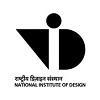
National Institute of Design (NID) has two paths to study animation: the BDes and MDes in Animation Film Design. All students benefit from the NID Animation Film Design Lab, which features state-of-the-art classrooms and studios. This production hub allows students, faculty members, and industry professionals brainstorm and bring their creations to life. The Lab is equipped with technology and production tools such as HP Workstations, Wacom Cintiq, sound systems, Toon Boom Pencil Check Pro, Dragonframe, and TVPaint Animation.
Other NID resources include the Exhibition Design Studio and Lab; Toy and Game Design Studio; Clay Studio; Printing Studio and Lab; Film and Video Communication Design Labs; Physical Computing Lab; Audiovisual (AV) Lab; IT Center; Photography Lab; Design Vision Center; and the Skills Development Lab. All resources are provided across NID’s three campuses.
Part of the NID Faculty of Communication Design, the BDes and MDes programs also feature small class sizes of no more than 19 students; case studies and other interactive sessions; experiential learning opportunities such as field trips and internships; immersive workshops; membership in the NID Film Club; access to learning opportunities at more than 55 overseas partner institutions; and project-based courses.
BDes and MDes students also have opportunities to present their works at the Student International Animation Festival Chitrakatha. This biennial event attracts professional Animators from independent and major studios from India and around the world.
In 2017, National Institute of Design launched a Design PhD that allows students to complete research and creative works in areas such as Film and Digital Media. Students in the Design PhD program have access to the same opportunities and resources as students in the BDes and MDes programs.
The BDes program may be completed in four years at the Ahmedabad campus. Available at all NID campuses, the MDes takes 2.5 years to complete. The NID Design PhD can be completed in four to six years at the Ahmedabad campus.
Graduates of the BDes, MDes, and PhD programs at National Institute of Design are prepared to pursue roles at animation studios, production houses, digital gaming studios, UI/UX and e-learning companies, television networks, advertising firms, and more. Program alumni are Animators, Filmmakers, Character Designers, Storyboard Artists, Producers, Creative Directors, and Consultants at places such as Cartoon Network, MTV, Nickelodeon, Cognizant, Infosys, and Tata Interactive.
NID alumni have also gone on to launch their own studios, freelance businesses, and careers as educators at NID and other universities around the world.
Established in 1961 as the National Institute of Industrial Design, National Institute of Design is a statutory institute under the Department for Promotion of Industry and Internal Trade (DPIIT), Ministry of Commerce and Industry, Government of India. The school serves approximately 1,200 students enrolled 20 programs at the bachelor’s master’s and PhD levels. Focus areas include Industrial Design; Communication Design; Textile, Apparel & Lifestyle Design; IT Integrated (Experiential) Design; and Interdisciplinary Design Studies.
Consisting of three campuses in Ahmedabad, Gandhinagar and Bengaluru, National Institute of Design has been declared an ‘Institution of National Importance’ by the Act of Parliament, by virtue of the National Institute of Design Act 2014. The school is also recognized by the Department of Scientific and Industrial Research-Government of India as a Scientific and Industrial Research Organization.

Bezalel Academy of Arts and Design (Bezalel) is Israel’s oldest art and design institution. The school recently moved to a brand new 10.5-acre campus in the heart of Jerusalem. Designed by the Japanese architectural firm SANAA the campus houses workshops, classrooms, gallery space, and an auditorium for nearly every discipline.
Bezalel Academy of Arts and Design also houses the Department of Screen-Based Arts, which features access to state-of-the art facilities and equipment; immersive workshops; guest lecturers; portfolio development courses; internship opportunities; and study abroad experiences. The Department also provides a Screen-Based Arts BFA that focuses on Animation and Experimental Cinematography.
Course examples for the program 3D Animation- Body Mechanics; 3D Character Animation; Animation Software; Art Direction for Stop Motion; Character Design and Storyboard; Compositing; Directing and Animation for Digital Platforms; Art Direction for Classic Animation; Experimental Animation; Maya: 3D Modeling; Sound Design: Animation; Stop Motion; Storytelling in 3D; Toon Boom; 3D Animation Directing; and Video Art.
The Screen-Based Arts BFA culminates with a final animation project. Graduates are prepared for careers in animation production, game art and design, and film and television. Some program alumni have launched their own studios, while others have started their own freelance businesses. Graduates have also won more than a dozen awards for work on a number of major productions.
Bezalel Academy of Arts and Design was officially established in 1906 as the Bezalel School of Arts and Crafts. Today, the school employs more than 500 faculty members that serve approximately 2,500 students enrolled in options across 10 bachelor’s departments and five master’s programs. Bezalel Academy of Arts and Design also has collaborative agreements across 215 academic institutions worldwide.

Queensland University of Technology (QUT) houses the Faculty of Creative Industries, Education, and Social Justice, which focuses on research and studies in areas such as film and animation; visual arts; communication and media studies; creative writing; visual communication and interaction design; performing arts; television and digital media; fashion design; and journalism and professional writing.
Within film and animation are two paths two-degree options for Animators including the Animation BFA and the Bachelor of Games and Interactive Environments (Animation). Both programs provide unlimited access to state-of-the-art studios and production facilities; internship opportunities; and study abroad experiences lasting one or two semesters, or during any semester break.
The QUT Animation BFA is a studio-based program that explores animated filmmaking, visual effects (VFX), and game development. Students in this program will gain practical skill sin drawing, motion graphics, real-time modeling for virtual environments, and 3D graphics. Course examples for the program include Animation History and Context; CGI Technologies; Motion Design; Animation Aesthetics; Visual Storytelling: Production Design; Digital Worlds; and Advanced Animation Production 1-3.
The Bachelor of Games and Interactive Environments (Animation) at Queensland University of Technology explores the technical and creative aspects of game development as well as emerging animation techniques. Students will master 3D modeling and animation, character animation, motion graphics, and real-time 3D. Course examples for the program include Animation Aesthetics; Digital Worlds; Visual Storytelling: Production Design; Digital Creatures; and CGI Technologies.
Across programs, animation students will work on real, practice-based projects. Students may enhance either degree by adding a second major and/or the Creative Industries minor. Second major examples include Integrated Marketing Communication, Advertising, and Entrepreneurship and Innovation. Minor examples include Interaction Design, Character Animation, Scriptwriting for Interactive Environments, User Experience, Screen Production, Design and Visual Storytelling for Animation, Entertainment, Visual Arts Practice, Digital Media Management, CGI, Public Relations, and Software Technologies.
The Animation BFA program culminates with a final capstone. Games and Interactive students will work in teams to complete and market a final publishable game.
Graduates of the Animation BFA program at Queensland University of Technology are prepared to pursue roles such as Animator, Illustrator, Visual Artist, Computer Games Developer, Multimedia Designer, Post-production Specialist, Film/Television Producer, Motion Graphics Designer, Artists, Web Designer, and Media Industry Specialist.
Alumni have worked on major productions and games such I, Robot; Spider-Man: Far From Home; How to Train Your Dragon; Guardians of the Galaxy; Hellblade; Avengers: Endgame; Disney Infinity 3.0; and Godzilla. Companies that have hired QUT Animation BFA graduates include Disney Animation, LucasFilm, Weta FX, Animal Logic, DNEG, and Rising Sun Pictures.
Graduates of the QUT Bachelor of Games and Interactive Environments program are Animators, Software Engineers, Game Programmers, Post-Production Specialists, Motion Graphics Designers, Multimedia Designers, Digital Content Producers, Visual Artists, Web Designers, Game Developers, and Computer Systems Engineers.
Queensland University of Technology began as Queensland Institute of Technology (QIT) in 1965. The school began operating under its current name in 1989. Today, this public research university serves nearly 50,000 students enrolled in more than 400 programs. QUT academic fields span the engineering, health, law, business, education, science, social justice, and creative industries. Programs at Queensland University of Technology are provided across two campuses and five faculties.
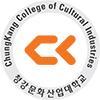
ChungKang College of Cultural Industries (ChungKang) houses the School of Animation, which has a three-year program that serves 180 students. Upon completion of the program, students can advance to the one-year BA program, which accommodates 50 artists. The entire program is multidisciplinary, workshop intensive, and studio- and project-based. Students will study animation, game design, cartooning, directing, post-production, and planning.
Course examples for the program include 12 Basic Principles of Animation; Experimental Animation; 3D Rigging; Matchmove Compositing; Visual Development; 3D Animation and Character Production; CFX Simulation; 2D Animation Production Workshop; 3D Human Modeling; Storyboard; and Digital Animation Techniques.
Other program features include courses taught by industry professionals; access to state-of-the-facilities, including the largest animation studio in Korea; a sound recording studio and a render farm; a tutoring program; opportunities to gain experience through mandatory local and international internships; independent study opportunities; and portfolio development.
In the final year of the program, students will develop their thesis project and presentation leading to the Animation BA. Graduates are prepared to pursue roles in animation, games, film, television, and advertising, among others.
ChungKang College of Cultural Industries opened in 1996 as South Korea’s first post-secondary institution with a primary focus on the cultural industries. Today, ChungKang provides programs ranging from Animation to Early Childhood Education. Programs are housed across the Schools of Manhwa Contents, Game, Culinary Arts, Animation, Fashion & Beauty Style, Convergence, Performing Arts, and Mobile IT, and the Department of Early Childhood Education.
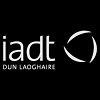
Institute of Art, Design + Technology (IADT) Dún Laoghaire is the only school of its kind in Ireland with a specific focus on the technological and creative cultural sectors. Within IADT is the Faculty of Film, Art + Creative Technologies, which houses The National Film School (NFS) and the Departments of Design + Visual Arts; Film + Media; and Technology + Psychology. Across departments, students have access to design, film, technology, and visual arts programs.
Other faculty features include curriculums that emphasize learning by doing; field trips; established partnerships within the creative, academic, commercial, and cultural sectors; immersive workshops; courses that focus on technology, production, research, and creativity; visiting artists; and access to state-of-the-art facilities, labs, studios, and digital tools. The IADT Faculty of Film, Art + Creative Technologies also provides several paths to study animation: the Animation BA, 3D Animation BA, and the 3D Animation MA.
The Animation BA is a full-time, four-year program that emphasizes individual and group projects, professional studios, and work placements. Serving up to 30 students, the program consists of four modules that cover areas such as animation principles, technical skills, storyboarding, idea development, scripting, production, character development, visual culture, layout, and background design. Students will work with traditional and digital media to create works. The program culminates with a final studio project, dissertation, and presentation.
Graduates of the Animation BA program at Institute of Art, Design and Technology Dún Laoghaire have been nominated for Oscars; presented their films at Sundance Film Festival; and animated and produced award-winning TV series. Program alumni have been hired at studios and companies such as Brown Bag Films, Cartoon Saloon, JAM Media, Boulder Media, Weta Workshops, and JibJab.
The 3D Animation BA at IADT was developed in partnership with Sheridan College, Toronto. The program explores storytelling, digital design, and the 3D animation pipelines including animation principles, rendering, lighting, character design, and world building. In addition to everything the Animation BA program has to offer, the 3D Animation BA provides the opportunity to study abroad under the Erasmus+ program or complete an internship in Ireland or abroad.
Course examples for the program include Animating in a Virtual Space; Bringing a Character to Life; New Ways of Seeing; World Building; Advanced Tech Skills and Cinematography for Digital Film; Telling a Story in 3D; and Digital Studies and Research Methodologies. The final year of the 3D Animation BA at Institute of Art, Design + Technology (IADT) Dún Laoghaire culminates with a minor project, major project, and thesis.
The IADT 3D Animation MA was also developed in partnership with Sheridan College and it is the first master’s degree of its kind in Ireland. Ideal for graduates of Computer Animation, VFX, and Creature Development programs, the 3D Animation MA requires a seven-week course in Research Methods for Creative Practices (in Canada or Ireland) and a 15-week final term at IADT’s Dublin campus. Students can complete any research components for the program abroad.
Course examples for the IADT Animation MA include Animating in a Virtual Space; Digital Creatures; Bringing a Character to Life; Telling a Story in 3D Preproduction; History of Film and Animation; Issues in Screen Studies; New Media Production; Advanced Tech Skills and Cinematography for Digital Film; and Acting with a Digital Character.
All IADT Animation MA students benefit from technical and project-based modules; team productions and individual exercises; immersive 3D animation production studios; and portfolio development. This full-time, 18-month program culminates with a final self-directed project that will be presented during IADT’s Exhibition and Showcase in May.
With a 92% employment rate within a year of graduating, IADT Animation MA alumni are prepared to pursue advanced roles across the animation, film, game, television, and advertising industries.
Institute of Art, Design + Technology Dún Laoghaire was established on April 1, 1997 as one of the 13 publicly funded Institutes of Technology in Ireland. Serving more than 2,500 students from 50+ countries, the school provides more than 25 program options leading to a certificate, bachelor’s, or master’s degree. Disciplines include Design, Art, Film + Media, Business, Psychology, and Research. IADT is officially recognized by the Department of Education and Skills of Ireland.

City University of Hong Kong (CityU) houses the School of Creative Media (SCM). Within the SCM is a Creative Media (CM) program with options leading to a BA, BSc, MA, MFA or PhD in Creative Media; a New Media BAS; and a joint degree with Leuphana University (LU) (CityU BACM or BAS + LU Digital Media BA). A Creative Media minor is also available.
All students have access to the SCM’s state-of-the-art animation studios and labs. Designed for 2D/3D animation and design, the labs are equipped with graphics workstations and the latest 2D/3D animation software, including Houdini, Maya, Zbrush, and Nuke. Other SCM features include work and learning that takes place in a studio environment; professional internships; participation in a semester-long exchange program with one of more than 160 partner institutions; and the opportunity to complete a summer study abroad program in animation. The program lasts one month.
Students in all CityU SCM programs can study animation, games, new media, or cinema through required courses, elective clusters, and free electives. Examples of available Animation courses include Character Animation; Procedural Animation; Computer Animation for Interactive Content; Computer Programming for Animators; Abstract and Experimental Animation; World Building in Digital Narrative Media; 3D Content Production in Maya; Digital Composition; Web Animation; and Creative Media Studio.
The CM programs at City University of Hong Kong culminate with a graduation project or graduation project/thesis. Graduates are prepared to pursue positions in areas such as animation (film and television), game art and design, cartooning, advertising animation, media art, screenwriting, storyboard art, multimedia design, video production, exhibit design, art education, and animation (health and science).
Established in 1984, City University of Hong Kong is a public research university the serves more than 20,000 students, including 9,000+ post graduates. The school provides access to hundreds of programs across 10 colleges and schools, and 29 academic departments. City U also established the Hong Kong Institute for Advanced Study (HKIAS), 10 Applied Strategic Development Centers, and 23 Research Institutes/Centers.

Istituto Europeo di Design (IED) has several paths to study animation. Undergraduate options include BA degrees in a CG Animation and Illustration and Animation. At the graduate level, students can earn a Master of Animation Design. The CG Animation BA and Master of Animation Design are housed at the Milan campus. The Illustration and Animation BA program can be completed at IED’s Rome campus.
Across all programs, students have access to state-of-the-art production facilities such as the video shooting, editing, and interactive labs; immersive animation workshops; and the opportunity to complete an internship.
The CG Animation BA is a 180 credit hour, three-year program that explores animation, visual effects (VFX), interactivity, and games. Course examples include Digital Animation Techniques 1-3; Semiotics of Art; Digital Modeling Techniques with 3D; Filmmaking; Interactive Systems 1-2; Sociology of Communication, Digital Cultures; and Software 1-3.
In the final year of the CG Animation BA program at Istituto Europeo di Design, students will complete an individual dissertation project.
The Illustration and Animation BA program at IED is a full-time, 180 credit hour program that allows students to experiment in areas such as comics, stop motion, character design, children’s illustration, Editorial illustration, and poster design. Course examples for the program include Digital Animation Techniques 1-2; Video Production Elements; Computer Graphics 1-2; Elements of Morphology and Form Dynamics; Illustration 1-4; and Film and Video History.
In the final year of the Illustration and Animation program at IED, students will complete a dissertation project, develop a professional portfolio, and build a demo reel.
The Master of Animation Design at Istituto Europeo di Design is a one year program that consists of three areas: Design, Production-Marketing, and Technical-Practical. Across areas, students will complete explore storytelling, special effects, animation design methods, character design, ambient design, production, and development.
Technical areas include 2D Animation: ToonBoom Harmony; Toon Boom Storyboard; Compositing Advanced Techniques and Effects; and Workshop: Stop Motion - Performance Capture. Production-Marketing Areas include Production Critical Analysis; Marketing; and Production Management. The program culminates with an individual short that demonstrates the student's ability to produce a professional film.
Graduates of the Master of Animation Design program at Istituto Europeo di Design are prepared to pursue leadership roles in animation production, special effects, game art and design, television and film production, advertising, multimedia, research, and art education.
Founded in 1966, Istituto Europeo di Design is a private Design school that serves 10,000 students each year. The school provides more than 100 undergraduate programs and 300+ graduate programs across 11 campuses in Italy, Spain, and Brazil. Programs at IED are organized across the schools of Art and Restoration; Design; Visual Arts; Fashion; and Communication. Istituto Europeo di Design is accredited by the Brazilian Education Ministry.
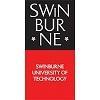
Swinburne University of Technology (Swinburne) is a recognized Toon Boon Center of Excellence. The school is home to the School of Arts, Social Sciences, and Humanities, which houses the Department of Film, Games, and Animation. Within the department are five paths to study animation. Options include a Bachelor of Animation (BA-ANI); Bachelor of Games and Interactivity/Bachelor of Animation (BB-GAMIANI); a Diploma of Screen and Media: Animation; an Advanced Diploma of Screen and Media: Animation; and a Certificate IV in Screen and Media.
All programs provide courses that emphasize hands-on training; opportunities to complete individual and collaborative projects; access to state-of-the-art production facilities, studios, and labs; networking opportunities with studios, creative agencies, and other organizations; and the chance to develop skills in real-world environments through the Swinburne internship program.
Across programs, students will complete animation courses such as 2D Production Techniques for Animation; Advanced Character Design for Animation; Motion Graphics; Writing and Directing for Animation; 3D Production Techniques for Animation; Genre and Moving Image; Screenwriting; Dynamics for Games and Animation; Producing and Production Management for Animation; Storyboarding; and History of Animation.
Students will also take courses such as Principles of Game Studies; User-Centered Design & Evaluation; Action Analysis and Locomotion; and Writing for Interactive Narratives.
The animation programs at Swinburne University of Technology culminate with a final project focusing on animation or games and interactivity. Students will also finalize a professional, industry-ready portfolio.
Graduates of all programs are prepared to pursue roles such as Animator, 2D or 3D Animator, Stop Motion Animator, Storyboard Artist, Screenwriter, Art Director, Cinematographer, Film Editor, and Producer.
Swinburne University of Technology was founded in 1908 as Eastern Suburbs Technical College. Today, the school serves more than 30,000 students across campuses in Hawthorn, Croydon, and Wantirna, Melbourne, as well as Sarawak, Malaysia. Swinburne provides degree and vocational programs in Arts, Engineering, Design, Technology, Health, Business, Science, and Law across several faculties, eight schools, and four departments.

Founded in 1992 and based in Montreal, the School of Digital Arts, Animation and Design at University of Quebec at Chicoutimi (NAD - UQAC) provides programs and research in areas such as digital arts, 3D animation, and visual effects (VFX). Also known as The NAD School, NAD began its partnership with UQAC in 2008, and has continued to welcome more than 460 students each year.
For students seeking a degree in animation, NAD – UQAC has a Bachelor in 3D Animation and Digital Design that allows students to select a concentration in video games or VFX for film and video, along with a second area of specialization. Students also benefit from access to state-of-the-art labs, studios, and production facilities equipped with the latest industry software and tools; lecturers who are leaders in the industry; courses taught by expert faculty; and partnerships with Epic Games-Unreal Engine, Ubisoft, Framestore, Gameloft, and Cinesite, among others.
Course examples for the program include Animation and Motion Capture; Character Animation; Real-Time Animation Practice I-II; Lighting Practice for Visual Effects and Animation; Practicing the Principles of Digital Animation I-II; Production Simulation Workshop: Visual Effects for Film and Video; Rigging for Visual Effects and Animation; Film Analysis and Review; and Production Management in the Digital Industry.
Students will take other courses such as Science and Physical Phenomena; Context and Production Ethics; Image Integration: Case Studies; Ethical Issues in Professional Practice; and Digital Creation Mentorship. An internship is also part of the program.
The 3D Animation and Digital Design program at UQAC culminates with the capstone project completed across two courses including Project: Design of an Animated Film and Production of an Animated Film.
With an 80% job placement rate, NAD – UQAC graduates are prepared for careers in animation, games, feature film, television production, VFX, illustration, advertising, health, architecture, industrial design, aeronautics, and fashion. Program alumni are also prepared to pursue graduate study in areas such as art, digital design, and video game design.
Founded in 1969, University of Quebec at Chicoutimi is a member of the University of Quebec System of 10 universities. The school serves approximately 6,500 students each year, with 1,000 students representing 50 countries around the world. More than 200 programs are provided in areas such as Art Computer Science, Literature, Nursing, and Engineering.

Ecole Emile Cohl has a Concept Artist program focus with two specializations including Animated Cinema and Animation Director. Both programs feature coursework that explores everything from character design to screenwriting to visual effects (VFX). Students in both areas will also master industry-standard Animation tools such as Toon Boom Harmony, TV Paint Animation, and Adobe After Effects.
Course examples for the program include 2D Animation; 3D Animation; Storyboard; Character Design; Digital Book; Sound Design; Infographics Software; Compositing and VFX using Nuke and After Effects; Matte Painting; Decors and Level Design in Photoshop; and Scriptwriting.
Other program features include immersive workshops; individual and group projects; professional critiques; trips to business conferences; a six-month internship; and support and preparation for the final graduation project.
The Concept Artist program at Ecole Emile Cohl takes two years to complete, full-time. Graduates will earn the RNCP Level 7 Title: Artistic Director – Director in Animated Cinema.
Ecole Emile Cohl is an independent art school that has been training artists since 1984. The school provides programs in animation, video games, illustration, comics, 3D drawing, storyboarding, and layout. Programs lead to a certificate or diploma. Ecole Emile Cohl is a private institution of higher artistic education recognized by the State.
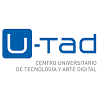
University of Technology, Arts and Design (U-Tad) is a Toon Boon Center of Excellence (COE) and Skydance Animation Partner. Affiliated with Camilo José Cela University (UCJC), the school provides digital education programs that emphasize real-world projects, teamwork across disciplines, and entrepreneurship. Across programs, students also benefit from courses taught by active professionals in the industry; access to state-of-the-art labs, studios, and production facilities; and additional partnerships with EA Games, PlayStation, Microsoft, and Ubisoft, among others.
For students seeking an Animation degree, U-Tad has seven program options. At the undergraduate level, students can earn a BFA in Animation or a BA in Visual Effects. Graduate programs include MA degrees in 3D Character Animation; Production Direction for Animation, Games and VFX; Rigging & Character FX; and Digital Compositing for VFX. A postgraduate program is available for advanced students would like to develop a professional portfolio in character design for digital animation.
While all options can prepare students for a career in Animation, the Animation BFA; 3D Character Animation MA; and Production Direction for Animation, Games and VFX MA are the most popular options.
The Animation BFA at U-Tad is the first Official Degree in Animation taught and designed by top international professionals. Students in this program will focus on animation for animated films, live action, and video games. Examples of areas explored include character design, storytelling, visual development, lighting, concept art, storyboarding, VFX, 3D modeling, photography, and shading. The program also allows students to specialize (minor) in 2D Animation; Art for Video Games and Immersive Systems; or 3D Visual Effects for Animation.
Courses for the U-Tad Animation BFA program guide students through the pre-production, production, and post-production phases of filmmaking and video game design. Course examples include Principles of Animation; History of Cinema and Animation; Principles of 3D Graphics; Storyboarding; 3D Character Animation; Experimental Animation; Organic Modeling; Digital Production; and Advanced Animation.
Animation BFA students will complete an internship, training for employment course, and the final degree project across four courses. Graduates are prepared to pursue titles from 2D/3D Animator to Character Developer to Visual Effects Artist.
The 3D Character Animation MA at University of Technology, Arts and Design focuses on developing advanced skills that can be applied to careers in animation, game design, advertising, and more. Courses include Production and Narrative for Animators. Each course covers many topics. Examples include Introduction to Maya for Animators; Narrative and Storyboarding; Advanced Physics; Animation Exercises/Dailies; Animation Reinforcement; Script; Advanced Acting; Rigging; and Production Pipeline.
MA students will also participate in workshops and take masterclasses such as Animation Workflow Masterclass at DreamWorks Animation; Rigging Workship for Animators; and Process for Approaching an Animation Shot Masterclass. Graduates will enter or re-enter the market with a professional reel of their best work. Potential job titles include Character Animator, VFX Character Animator, and Crowd Animator.
The U-Tad MA in Production Direction for Animation, Games and VFX focuses on supervision and production management. Students in this program will learn how to analyze projects, create and propose budgets, develop schedules, and establish plans. Areas explored include artistic and technical fundamentals of animation; project development and feasibility analysis; VFX pipeline; Animation Pipeline; monitoring, analysis, and learning; outsourcing control; methodology and tools for production control in Animation and Videogames (agile methodologies); intellectual property; financing and operation of a video game; and creative team management.
The U-Tad MA in Production Direction for Animation, Games and VFX culminates with a master’s thesis. Graduates are prepared to pursue roles such as Production Manager, Executive Producer, Production Coordinator, and Production Supervisor at top studios across the animation, VFX, and video game industries.
Graduates of the BA, BFA, and MA programs at U-Tad have won dozens of awards and received hundreds of credits across the entertainment, advertising, and other industries. U-tad alumni have worked on productions for studios such as Industrial Light & Magic (ILM), Disney, Sony Pictures Imageworks, Rockstar Games, Moving Picture Company (MPC), Ubisoft, DNEG, Weta FX, Blur Studio, Framestore, Cartoon Saloon, Skydance Animation, Giant Animation, and Illusorium Studios.
University of Technology, Arts and Design was founded in 2011 by digital and technology industry professionals. Situated on a 3.45 acre Corporate Campus near technology companies, creative studios, and more, this four-year university serves nearly 2,000 students enrolled in Animation, Video Game Design, Computer Science, Digital Design, Physics, and Mathematics degree programs. U-Tad operates under the guidelines of the Internal Quality Assurance System (IQAS) of the Camilo José Cela University and those indicated by the European Higher Education Area.

The Glasgow School of Art (GSA) is home to the School of Innovation and Technology, which has several paths to study animation and sound for animation. Options include the BSc in Immersive Systems Design, and BDes and MDes degrees in Sound for Moving Image. BSc students may specialize in 3D Modeling, which explores 3D modeling for animation, visual effects (VFX), and digital games.
Supported through relationships with companies such as Sony, Amazon, and Microsoft, the Immersive Systems Design program features courses led by Unity Certified instructors; access to the Hub at Pacific Quay, which houses state-of-the-art production and sound studios; internship and study abroad opportunities; and portfolio development services.
Graduates of the Immersive Systems Design program at The Glasgow School of Art are prepared to pursue roles such as Animator, Environment Artist, Character Animator, Asset Artist, Look Development Artist, 3D Modeler for Film and Games, VFX Artist, and Texture Artist.
Launched in 2018, the BDes in Sound for the Moving Image at The GSA explores sound for animation, games, feature film, television, new media, and visual art. Students in this program have opportunities to collaborate across other GSA programs to produce works such as animated films, video games, installations, cartoons for television networks, and installations.
Upon completion of the two-year BDes program, students will have a professional portfolio of their best work. Final portfolios will be presented at the GSA Graduate Showcase.
The Sound for Moving Image MDes at The Glasgow School of Art focuses on helping students develop advanced skills in animation for film, television, new media, visual art, and games. Students in this program will also develop the skills needed to conduct research within the discipline. Students will participate in studio workshops; attend lectures and seminars; interact with guest speakers and visiting lecturers; conduct self-directed learning and research; and peer-review that allows students to present their work in a supportive environment.
Moving Image MDes course examples include Sound for Moving Image 1-2; and Research in Sound and Film. The program culminates with a master’s project to be presented at the GSA Graduate Showcase.
Graduates of the Sound for the Moving Image BDEs and MDEs programs at Glasgow School of Art have won awards for sound design work on award winning films. Program alumni have also gone on to establish careers across the entertainment and game design industries.
Founded in 1845, The Glasgow School of Art is one of the first Government Schools of Design. Serving more than 2,000 students, the school provides nearly 50 degree programs across four schools including Mackintosh School of Architecture; the School of Design; the School of Fine Art; and the School of Innovation and Technology. All GSA degree programs are validated by the University of Glasgow (est. 1451). The Glasgow School of Art is also approved by the Quality Assurance Agency (QAA) and the Scottish Further & Higher Education Council (SFC).

ISART Digital (ISART) has 3D program with options in 3D Animation and Special Effects. Leading to a bachelor’s and eventually, the MA, this project-based program is delivered in a film studio setting equipped with the latest industry-standard tolls and technology. All students benefit from partnerships with Tokyo University of Technology (TUT) and Niigata Computer College, which allow them to spend one month or 6-12 months in Japan, while immersing in the local 3D, FX, animation, and game industries.
During one-month stays, ISART students can participate in a Game Jam. During longer stays, students will have the opportunity to complete a research thesis project under the direction of a TUT professor. All study abroad opportunities are ideal for students who are interested in animating for games. Across programs, students will also complete up to two internships—locally or abroad.
The ISART 3D bachelor’s is a three-year program that focuses on the fundamentals of 2D and 3D, character animation, shooting and editing, environment creation, and photography. Students will learn about the animation production process from pre- to post-production. Utilizing a variety of 3D tools, undergraduate students will complete several group and individual projects.
Sample course content for the program includes 2D Animation; Storyboard; Organic Rigging; Animation and Special Effects; 3D Animation; Motion Design; 2D Character Design; Compositing; Vectorial Drawing; Roto-Animation; Lighting & Rendering; and History of Cinema.
The master’s 3D program is dedicated to the completion of an end or studies film project. For 24 months, graduate students will develop advanced production skills while working in the studio to animate, rig, and compose all of the elements of a professional, industry-ready 3D film. Sample course content for program includes Character FX; Advanced Rigging; Dynamic Simulation; Advanced 3D Animation; 3D Sculpture; Realistic/Stylized Preproduction; and Rush Animation.
Graduates of the 3D program at ISART Digital enjoy a 90% employment rate. Program alumni are prepared to pursue positions such as 3D Animator, Technical Director, Storyboard Artist, Art Director, Environment Artist, CG Supervisor, FX Artist or FX Director, Concept Artist, and Motion Designer.
Launched in 2001, ISART Digital serves approximately 1,200 students across campuses in Paris, Nice, and Montreal, Canada. ISART provides more than a dozen degree programs in the 3D animation, visual effects (VFX), and game design disciplines. The degree programs at ISART Digital are accredited by the French & Canadian governments. In addition, ISART is a member of the Network of French Cinema Animation Schools (RECA) and Les Femmes s'Animent (LFA).
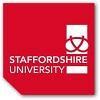
Staffordshire University (Stafford) is home to the School of Digital, Technology, Innovation and Business. An Unreal Authorized Training Center, the school provides transdisciplinary programs in the creative arts and digital technologies. This includes BA and MA degrees in Animation.
Students in all programs benefit from university connections with studios such as Pixar, Walt Disney Animation Studios, Carse & Waterman, and Aardman; interactions with visiting speakers; learning that takes place in a workshop environment; trips to the UK Animation Festival and others; apprenticeships; international excursions; and access to state-of-the-art studio spaces as well as digital, animation, games, and stop motion labs.
Animation students also have opportunities to display their work at annual industry and public events such as GradEX, New Designers, and the Degree Show.
The Animation BA at Staffordshire University is a three-year program that focuses on animation, drawing, and production. Delivered in a module format, the program features courses such as Animation Principles; Character Creation; Animated Stories; Animation World; and Team Animation. In the final year of the program, students may complete an internship, professional animation profile, and a portfolio showreel. Final student work will be presented to a panel of industry leaders as part of Industry Portfolio Week.
Stafford Animation BA graduates are prepared to pursue careers across the animation, games, film, and advertising industries. Program alumni have worked on projects such as Guardians of the Galaxy, Transformers, Wes Anderson’s Isle of Dogs, and Skyfall. Graduates have also landed positions at major studios such as Disney, Industrial Light & Magic (ILM), Sony, Moving Picture Company (MPC), Blue Zoo Animation, DNEG, Cinesite, Aardman Animation, and Brown Bag Films.
The Animation MA program at Staffordshire University has both full-time (13 months) and part-time (22 months) options. Both allow students to customize the degree to fit their career goals. Modules for the program include Animation Design and Technology; Animation Industries and Ecosystems; Animation Production Proofs and Solutions; Animation Story and Performance; and Animation Culture and Critique.
In the final phase of the program, students will participate in Animation Production Consolidation. Over two modules, students will have the opportunity to complete a short film or showreel for the Animation Presentation. This screening event attracts industry partners, collaborators, and future investors.
Graduates of the Animation MA program at Staffordshire University have landed positions at studios such as DNEG, Brown Bag Films, Cinesite, and Boulder Media.
Staffordshire University opened as a polytechnic institute in 1914. On June 16, 1992, the school was officially given university status. Serving thousands of students around the world, Staffordshire provides programs across the School of Digital, Technology, Innovation and Business; the School of Health, Education, Policing and Sciences; and the Institute of Education. In 2019, the school launched Staffordshire University London—a specialist campus that focuses on education and training in the computing and gaming sectors.

Haute Ecole Albert Jacques (HEAJ) provides undergraduate degrees in 2D Animation & Digital Illustration, and 3D Animation Movies. The 2D program explores computer graphics, still and moving image software, illustration, and 2D animation. Students will participate in workshops, collaborative projects, and a three-month internship in the final year of the program.
Course examples for the program include Programming; 2D Computer Graphics Techniques; Visual Communication; VFX Animation; 2D Artwork & 3D Modeling; Digital Illustration; and Storyboard.
The 2D Animation & Digital Illustration program at HEAJ culminates with an illustration book and/or 2D animation short film based on mixed or computer graphics techniques.
The 3D Animation Movies program provides the technical training students need to master all phases of an animated production. A major component of the program is the workshop series, which attracts artists from Pixar, Disney, and Industrial Light & Magic (ILM). During these workshops, 3D students have the opportunity to learn from leading figures in the industry.
In the second year of the 3D Animation Movies program at HEAJ, students will produce a solo demo reel that demonstrates what they have learned so far. This reel helps students secure an internship with a studio. In the final year, students will work in groups of three to four to complete an animated short and complete the internship. The 3D program culminates with a film screening attended by students, faculty, and a professional examination board.
The 2D Animation & Digital Illustration, and 3D Animation Movies programs at Haute Ecole Albert Jacques lead to a bachelor’s degree. Across programs, graduates are prepared to pursue positions such as Animator, Artistic Director, Storyboard Artist, 3D Animator, Motion Designer, 3D Computer Graphics Designer, Illustrator, InBetweener, Special Effects Director, Modeler, Director, and Layout Artist.
Haute Ecole Albert Jacques was established September 15, 1995 after the merger of the Institute of Higher Pedagogical Education of the French Community in Namur (ESPENA) and the Institute of Economic Higher Education of the French Community in Tamines (IESET). Serving more than 2,000 students, HEAJ provides bachelor’s masters, bridge, and honors programs in business, communication, digital and creative media, education, and accounting.

Edinburgh College of Art (ECA) is part of the University of Edinburgh. An Aardman Academy Partner, the ECA houses the Art History MA program and four schools including Edinburgh School of Architecture and Landscape Architecture (ESALA); the School of Design; Reid School of Music; and the School of Art. Within the ECA School of Design is an award-winning Animation BA program that provides opportunities to produce animated films and games individually and as part of a team.
Other program features include small class sizes; dedicated individual studio spaces; access to state-of-the-art facilities and equipment such as CGI and 3D stop-motion labs, a Mac Suite, dark rooms, and a render farm; technical workshops; and the opportunity to interact with visiting Animators and other artists in the field. Students will also have the opportunity to complete an internship and study abroad experience.
Graduates of the Animation BA program at Edinburgh College of Art are prepared to pursue roles across the entertainment, games, and advertising industries. Some ECA Animation graduates have worked for directors such as Tim Burton and Wes Anderson, while others have been hired at studios such as Aardman, Framestore, Rockstar North, LAIKA Studios, and Media Molecule.
Some ECA Animation alumni have launched their own studios such as Wild Child Animation and Ko-Lik. Other program graduates work as independent filmmakers winning local, national, and international awards.
Edinburgh College of Art is one of 21 schools housed across University of Edinburgh University’s three colleges including Arts, Humanities & Social Sciences; Medicine & Veterinary Medicine; and Science & Engineering. University of Edinburgh was established in 1583, while ECA dates back to 1760 when it was founded as the Trustees Drawing Academy of Edinburgh. This was the first public School of Art in Great Britain. The school became Edinburgh College of Art in 1906, and merged with University of Edinburgh in 2011.
Today, Edinburgh College of Art employs 500 research and teaching staff that serve 3,000 students. Approximately 60 programs of study are available in five areas: Art; Architecture and Landscape Architecture; History of Art; Design; and Music.
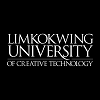
Limkokwing University of Creative Technology (Limkokwing University) has several paths to study animation: the Animation & Multimedia Design diploma, an associate degree in Animation, and an Animation BA. All programs are delivered through the Faculty of Creative Multimedia.
The diploma program explores emerging, advanced, and experimental digital animation. Course examples include Animation Methodology; Computer Graphics; Communication Studies; Animation Production Design; Analytical Drawing; Design Studies; and History of Animation. Students in this program will also complete a final project across two courses.
Graduates of the Animation & Multimedia Design program at Limkokwing University are prepared for careers such as Assistant Animator, 2D Animator, Digital Ink Artist, Character Designer, Visual Development Artist, 2D Concept Artist, Background & Layout Designer, and Storyboard Artist.
The Animation associate’s degree program at Limkokwing University explores the fundamentals of animation. Students in this program will also learn about storytelling, animation history, and special effects (SFX). Upon completion of this program students are prepared for entry-level positions in the entertainment industry or for admission to the Animation BA.
In addition to storytelling, animation history, and SFX, the Animation BA also explores scriptwriting, industry software, classical animation, and the entire animation production pipeline. Animation BA students will also complete hands-on projects and coursework in a professional studio-like environment, while gaining real-world experience through the internship program.
Course examples for the program include Animation Practice 1-4; 3D Modeling; Multimedia Imaging; 3D Environment & FX; 3D Animation; Video Production; and Animation Project Management. Animation BA students will also take the Professional Studies and Entrepreneurship courses.
The Animation BA Program at Limkokwing University culminates with an animation dissertation and final project completed across two courses.
Graduates of the Animation BA program at Limkokwing University of Creative Technology graduates are prepared to pursue advanced roles in across the animation, games, television, feature film, and advertising industries. Potential job titles include Animator, 3D Animator, Character Animator, 3D Modeler, Texture Artist, Game Artist, Art Director, Digital Matte Artist, and Animation Supervisor.
Limkokwing University of Creative Technology was established in 1991 under the name Limkokwing Institute of Creative Technology. The school, which serves more than 30,000 students from over 150 countries, has 13 campuses in Asia, Africa, and Europe. Limkokwing University of Creative Technology provides hundreds of accredited diploma, degree, and postgraduate programs across seven faculties, Limkokwing Sound & Music Design Academy, and the Limkokwing Post-Graduate Center (PBC).
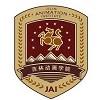
Jilin Animation Institute (JAI) is home to the School of Animation Art (SAA). Established in 2000, the school is one of the first on China to provide an undergraduate animation program. Serving more than 2.600 students, the SAA hosts than 200 international visiting professors, including Director of Kung Fu Panda, Mark Osborne. Students also benefit from SAA-based research and experimental platforms such as Jilin International Joint Research Center for Digital Animation Technology; Jilin Virtual Simulation Animation Technology Laboratory; and the Jilin 3D Interactive Technology Laboratory.
Other SAA benefits include participation in international exhibitions and competitions; research, technology development, and projects with close to 100 international universities in 30 countries; immersive workshops; and state-of-the-art classrooms, studios, and production facilities.
The School of Animation Art at Jilin Animation Institute also provides three BA programs: 2D Animation, 3D Animation, and New Media Animation. Across programs, students may take courses such as 3D Design; Programming; History of Animation; Character Design; Principles of Timing; Color and Media; Web Design; Animation Project Management; Web Design; Layout, and Post-Production.
All JAI SAA animation students will have the opportunity to complete several Animated films and an internship.
The Animation BA programs at Jilin Animation Institute can be completed in four years, full-time. Graduates are prepared for graduate study and careers in animation, games, television and film, advertising, and more. Graduates have gone on to pursue graduate study at top institutions such as Savannah College of Art and Design (SCAD), Rubika France, and University of the Arts London.
Program alumni have also been hired at Tencent, Light Chaser Animation, CCTV, NetEase, Perfect World Entertainment, ALPHA, and miHOYO.
Jilin Animation Institute was established in June 2000. This independent, private, undergraduate college serves 12,000 students enrolled in 36 majors across 14 schools/academies including Animation Arts; Manga; Games; Design and Product; Film; Film Technology; Virtual Reality; Cultural Industry Business; Animation Industry; Civil Aviation; Innovation and Entrepreneurship; Marxism; General Education; and International Exchange. Jilin Animation Institute is approved by the Ministry of Education.
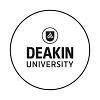
Deakin University (Deakin) is home to the School of Communication and Creative Arts, which provides programs in the areas of Design and Creative Arts; Media and Communications; and Film, Television and Animation. Across all areas, students have access to state-of-the-art and industry-standard equipment, software, and production facilities; dedicated computer labs and Deakin Studios—the school’s virtual production, television, film, and animation studio; and industry partnerships with more than 500 companies, studios, businesses, and other organizations.
Deakin’s School of Communication and Creative Arts also houses the Bachelor of Film, Television, and Animation program, which provides the opportunity to complete an internship at places such as Fox Sports and Dreamscreen. In addition, students may customize their studies through one of three majors and/or one of six minors. Majors include Animation; Producing Screen Content; and Screen Production. Minors include Animation and Motion Graphics; Film Studies; Visual Effects and Virtual Production; Screen Content Production; Scriptwriting; and Producing Screen Content.
All options provide opportunities to work on projects with real clients. Course examples across majors and minors include Principles of Animation; Designing 3D Animated Environments; Character Design and Animation; Writing for Games: Designing Quests and Characters; Animated Motion Graphics; Visual Effects and Animation; Character Animation; Interactive Design Studio; and Character Design and Development for Animation; Screen Producing; Information Design; and Television Studio Production.
As the culminating experience for the Bachelor of Film, Television, and Animation program, students will complete an animated film. Graduates are prepared for to pursue dozens of different careers across the entertainment, advertising, education, and digital media industries. Examples include animation and animation design; visual effects; story development; virtual production; game design and production; visual communication and advertising; VR and AR production; motion graphics; screenwriting; production design; corporate and digital media; production management; and education and eLearning.
Established in 1974 Deakin University serves more than 60,000 students across four campuses in Melbourne, Geelong, and Warrnambool Australia. The school provides more than 200 industry-designed programs across four faculties and 14 schools. This public university is accredited and/or recognized by the Department of Education and Training of Australia, and the Tertiary Education Quality and Standards Agency of the Australian Government (TEQSA).

University of Portsmouth (UoP) has several paths to study animation including an Animation BA; a BSc in Computer Animation and Visual Effects (VFX); and a Computer Animation MSc. Animation BA at University of Portsmouth requires 120 credit hours of study. Accredited by Joint Audio Media Education Services (JAMES), the BA program combines lectures, seminars, workshops, and tutorials with courses taught by professionals from major studios such as Sony, Disney, and Cartoon Network.
BA students will learn to work in 2D and 3D using both digital and traditional techniques, while mastering professional production techniques. Software includes Adobe Creative Cloud, Maya, TV Paint, and Wacom Cintiq Drawing Studio. Other program benefits include the opportunity to earn Adobe Certified Professional (ACP) accreditation; a full one year internship; and participation in the annual UoP Game Jam.
The Animation BA program culminates with the completion of a dissertation, showreel, and portfolio. Final works will be presented at UoP’s Annual Graduate Shows. Around 93% of Animation BA graduates find employment or go on to pursue an advanced degree.
Program alumni have been hired at places such as Sony Pictures Animation, Cartoon Network, Framestore, The Mill, Centroid 3D in Pinewood Studios, Climax, and Kuju Games. Some UoP animation graduates have worked on productions such as Avatar, World of Gumball, Tim Burton’s Alice in Wonderland, and The Amazing Life of Pi.
The Computer Animation and VFX BSc at University of Portsmouth is a JAMES accredited, Houdini Certified program led by industry experts in animation, film, computer games, and advertising. Program features include guest speakers and lecturers; collaborative projects; access to state-of-the-art facilities such as the Motion Capture Studio and Center for Creative and Immersive Extended Reality; participation in the annual UoP Game Jam; internships at places such as Industrial Light & Magic (ILM), Moving Picture Company (MPC), and Framestore; and an optional Creative Technologies Study Exchange (overseas study).
Students in the BSc program will explore 3D animation, concept drawing, physics-based simulation, and compositing, and master professional software such as Zbrush, 3ds Max, Houdini, Maya, Nuke, and Mari. The program also provides the opportunity to learn a foreign language through the Institute-Wide Language Programme (IWLP).
Course examples for the program include Modeling for Animation and VFX; Designing for Animation; CGI Lighting and Look Development; Visual Communication; Computer Animation and VFX Research; Visual Effects; Create Worlds; Advanced Creature FX and Rigging; Advanced Programming for Animation and VFX; Animation and Setup for Computer Animation; and Motion Capture Applications.
The Computer Animation and VFX BSc program culminates with a final year project and portfolio. All students have the chance to win sponsored prizes for final projects.
Graduates of the Computer Animation and Visual Effects BSc at University of Portsmouth are 3D Animators, VFX Artists for film and television, Game Artists, Concept Artists, Modelers, and Art Directors. Program alumni have worked with studios such as ILM, DNEG, Framestore, MPC, and Milk VFX.
The Computer Animation MSc at University of Portsmouth is a 180 credit hour program that provides the opportunity to focus in a specific area of computer animation. Students also benefit from access to state-of-the-art graduate facilities that include Cintiq’s, high-end computers, and industry standard software such as Substance 3D Painter, Houdini, Maya, and Nuke; UoP’s relationship with local VFX company Dark Cosmos Creative; participation in clubs and workshops such as ZBrush Sculpt Club, Film/Animation Nights, and Character Animation Workshop; industry talks; and career/networking events that attract local and regional employers.
All students will complete 180 units of study across five modules and 12 months. Modules include Professional, Academic and Research Development; Project Context and Definition; Project Design and Development; and Project Evaluation and Resolution. The program culminates fit a final project that demonstrates leadership skills in the students chosen area of expertise.
Graduates of the MSc Computer Animation program at University of Portsmouth have landed positions such as Art Director, Storyboard Artist, FX Artist, Animator (feature film), Motion Capture Technician, Creative Director, Modeler, and Concept Artist. Industrial Light & Magic (ILM) is one of many studios that hire UoP MSc graduates.
Established in 1908 as a school for chemistry and engineering, University of Portsmouth was one of the largest polytechnic schools in the UK before gaining university status in 1992. Today, the school serves 31,000 students, with 5,700 students representing 150 countries around the world. With campuses in Portsmouth and London (UoP London), UoP provides bachelor’s and master’s degree programs across all disciplines. University of Portsmouth is officially recognized by the Privy Council.

Ecole Des Nouvelles Images provides intensive 2D and 3D Animation programs that are supported by the French government, South Region, the Department of Vaucluse, and the city of Avignon. Both programs consist of five years of intensive training. The 2D program consists of modeling and painting workshops; introductory courses in areas such as graphic design, 2D computer graphics, and digital painting; study in narrative structure, cinematography, storytelling, and directing; and the 12 principles of animation.
In the third year of the program (summer session), all students will complete an internship with a local studio or organization. In year four, 2D Animation focus on character rigging, compositing, storyboard and layout, and character animation. Students will also complete group and individual projects.
The final year of the program consists of a 10-month long project leading to a professional film. This final project will be presented to studio recruiters, peers, faculty, and family at a Diploma Jury event.
Graduates of the Animation programs at Ecole Des Nouvelles Images are prepared to pursue positions in all areas of animation, television, feature film, game design, multimedia, advertising, and education.
The 3D Animation program at Ecole Des Nouvelles Images begins with an introduction to the artistic and technical aspects of 3D. Students will participate in creative workshops, 2D animation projects, and art history coursework. The second year focuses on drawing, animation, and modeling. Students will work individually and in teams to create animated projects.
Year three of the 3D Animation program will have the opportunity to complete an individual short 3D animation film as well as coursework related to the entertainment and other business. In the fourth year, students will have the opportunity to select a specialty, work in teams to produce a 30 second 3D short, and prepare a demo tape.
The last year of the 3D Animation program at Ecole Des Nouvelles Images, students will spend 10 months perfecting their final films to be presented at the Diploma Jury event. 3D Animation graduates are prepared to pursue leadership roles all areas of animation, feature film, video game design, animation for television, advertising, multimedia, and education.
Established in 2017, Ecole des Nouvelles Images is an independent, non-profit college that provides animation and video game design programs to students in France and abroad. All programs are supported by the Ministry of Culture and the French National Centre of Cinema (CNC).
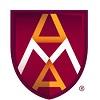
Academy of Media Arts Cologne (KHM) has two graduate paths to study animation including a Media Art MFA and a doctoral degree. Both programs allow students to select an emphasis from more than a dozen options. This includes Animation/3D Animation. All KHM programs are interdisciplinary, allowing students to specialize in additional areas.
Other program features include seminars and tutorials; the opportunity to collaborate with students from other disciplines; interactions with visiting artists; access to state-of-the-art studios and labs; internships and study abroad experiences; participation in festivals and exhibitions; and career development services. All KHM animation students will also have the opportunity to complete four individual projects to be included in a final professional portfolio.
Graduates of the Animation programs at Academy of Media Arts Cologne are independent filmmakers, studio owners, freelance artists, and salaried professionals. Some KHM graduates have gone on to teach at top art and design schools in Europe and abroad.
Founded in 1989, Academy of Media Arts Cologne opened on October 15, 1990 with 25 students and a one post-graduate program. Today, the school enrolls around 400 students annually, with at least one-third coming from abroad. In addition to Animation, 3D Animation, and Games, KHM provides emphasis areas such as Creative Production, Documentary Film, Scriptwriting, Art and Media Studies, Sound Art, Installation, and Image Design.
Academy of Media Arts Cologne is accredited by the Ministry for Culture and Science of the Federal State of North Rhine-Westphalia (NRW).

L'Institut Supérieur des Arts Appliqués (LISAA) provides several paths to study animation. At the undergraduate level, LISAA has a bachelor’s degrees in 2D Animation; 3D Animation; 2D/3D Animation; and VFX. All programs are provided at the main campus in Paris. The 2D/3D program is also available at the Toulouse campus.
At the graduate level, LISAA has a 3D Animation master’s that can be completed in two years at the Paris campus. Across programs, students benefit from partnerships with studios such as Illumination, Mikros Animation, and Method Studios; the opportunity to complete solo and team projects; and access to state-of-the-art facilities such as motion capture and post-production sound studios, a digital calibration station, and a computer park equipped with professional software.
LISAA also has more than 50,000 contacts across 650+ professions, and additional partnerships with Wacom, the Toon Boom Center of Excellence, progiss/3DVF, and Adobe.
In addition to taking courses such as Digital Color/3D Techniques, Shooting/VFX, Storyboard, 2D Animated and Motion Design, LISAA animation students will master industry-standard software such Maya, Toon Boom Harmony, Nuke, Houdini, Unreal Engine, Autodesk 3ds Max, Unity, and V-Ray. All programs culminate with a professional film and portfolio.
LISAA animation graduates are prepared to pursue titles such as 2D Animator, 3D Animator, VFX Artist, Texturing Artist, Character Designer, Art Director, Animation & Special Effects Production Manager, CG Generalist, Storyboard Artist, Background Designer, Game Artist, Lighting/Rendering Artist, Modeler/Mapper, Tracking/Match Move Artist, Motion Designer, Texturing Artist, Rigger, and Screenwriter.
Founded in 1986, L'Institut Supérieur des Arts Appliqués is a private higher/technical education institution that trains Artists in the fields of animation, graphic design, games, interior architecture, and fashion. Serving more than 4,000 students. LISAA has a main campus in Paris and six additional campuses from Bordeaux to Toulouse.

University of South Wales (USW) is home to Film & TV School Wales. Founded more than 50 years ago, the school provides animation programs for students seeing careers in film, games, or both. Undergraduate options include BA degrees in Animation (2D and Stop Motion) and Computer Animation. At the graduate level, students can earn an Animation MA.
Students in all USW Flim School programs benefit from partnerships with IntoFilm, Epic Games, Screen Alliance Wales, and Unreal Engine; access to media production resources such as state-of-the-art TV and film studios, computer animation studios, dubbing theaters, motion capture and green screen studios, editing suites, and two screening cinemas. Software includes Houdini, Zbrush, Autodesk Suite (Maya, 3ds Max, Mudbox, Motionbuilder), Adobe Suite, Foundry Suite (Nuke, Mari, Modo), Unreal Engine, Unity, Substance Suite (Designer, Painter), Realflow, TopoGun, and Redshift.
Across programs, students will take courses such as Visual Studies: Animation; Creature Creation, Animation, and Implementation for Film/TV/VFX; Characters and Scenes; Narrative Strategies; Animation and Design; Design for Animation; Technical Practice in 2D Stop Motion; and Animation Pipeline. Cross-disciplinary collaboration is encouraged, so students will work with peers across the CG, VFX, film, music, sound, and drama disciplines.
With ScreenSkills Select accreditation, the Animation (2D and Stop Motion) BA also provides opportunities to participate in field trips to zoos, farms, nature reserves, and studios such as Aardman Studios, Bad Wolf Studios, and Clothcat Animation. In addition the program hosts two-day trips to London each year to visit places such as Goldenwolf studios, Studio AKA, Picturesmith, and The Line, as well as visits to animation festivals in the UK and across Europe.
All students have the opportunity to gain valuable work experience through one or more work placements during the program. Examples of formal placements include DNEG, Lucasfilm, Industrial Light & Magic (ILM), Moving Picture Company (MPC), and Framestore. The USW 2D/Stop Motion Animation BA culminates with a final project and animation dissertation.
The Computer Animation BA at USW is also ScreenSkills accredited. Students in this program also benefit from studio visits; two-day trips to London; and guest speaker events and masterclasses occurring every four weeks. The program has hosted visitors from places such as Sony ImageWorks, Aardman Animations, DNEG, Framestore Blue Zoo, and Jellyfish Pictures. The Computer Animation BA culminates with a major project.
The Animation MA at University of South Wales consists of six modules: Animation Exploration; Professional Practice: Animation; Animation Application; Animation Specialization; Major Project: Animation; and Animation Review. Under the direction of industry professionals, students will participate in studios, workshops, lectures, seminars, case studies, discussion groups, and multimedia presentations.
An optional internship is part of the program as well as group presentations. Students can complete the USW Animation MA in one year full-time or two years part-time.
Graduates of the animation programs at University of South Wales have worked on major games and productions for studios around the world. Examples include Somy Pictures Imageworks, DreamWorks Animation, Industrial Light & Magic (ILM), Ubisoft, Rockstar Games, PlayStation, EA Games, Microsoft, DNEG, Framestore, and Passion Pictures.
University of South Wales was established in 2013 following the merger of the University of Glamorgan (established in 1913 as the School of Mines) and the University of Wales, Newport, which dates back to 1841 with the founding of Newport Mechanics’ Institute. The school serves more than 30,000 students enrolled in hundreds of programs across five campuses. University of South Wales has been awarded the QAA Quality Mark for meeting or exceeding UK expectations for quality and standards.